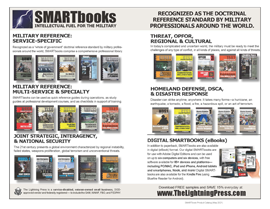Previous Editions (Limited Stock)
Previous Editions (Limited Stock)
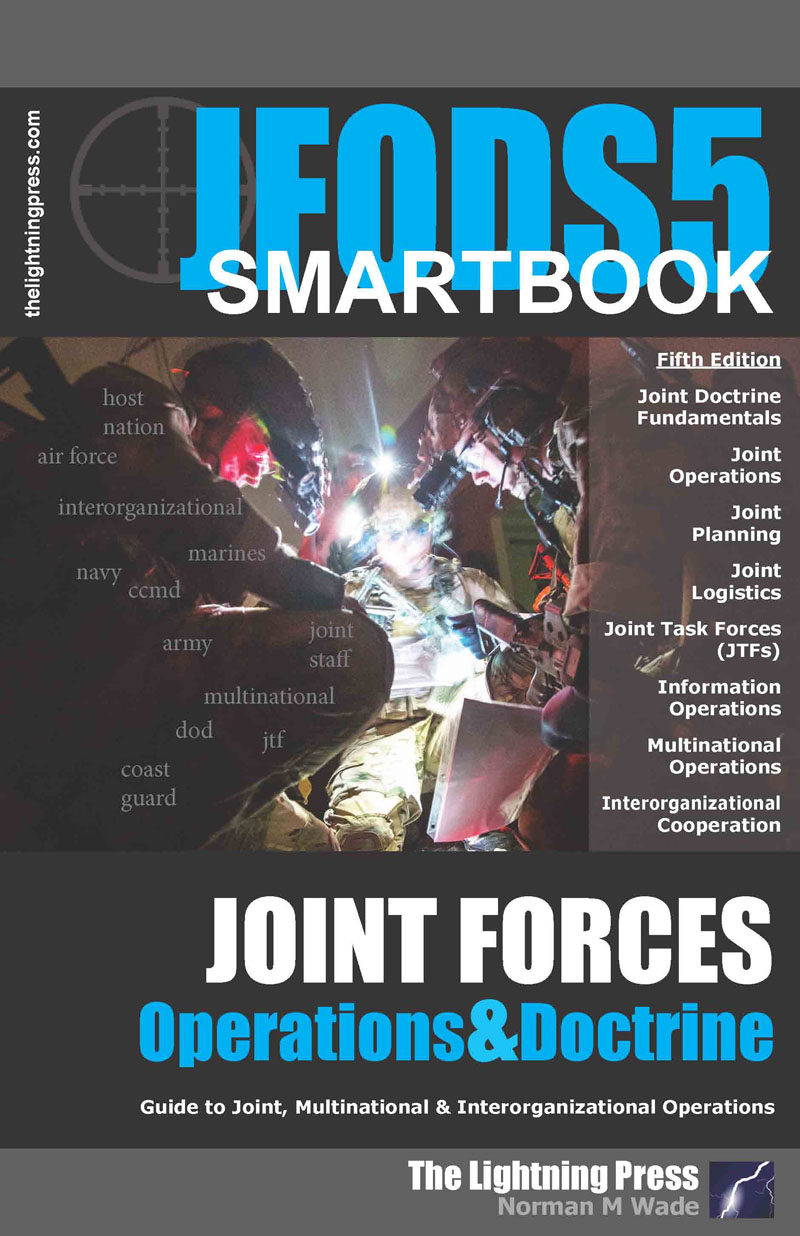
JFODS5: The Joint Forces Operations & Doctrine SMARTbook, 5th Ed. (PREVIOUS EDITION)
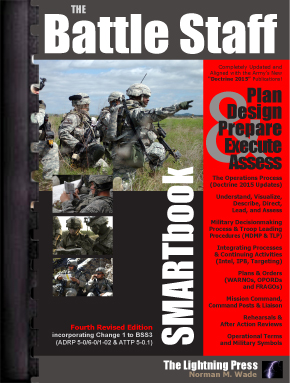
The Battle Staff SMARTbook, 4th Rev. Ed. (PREVIOUS EDITION)
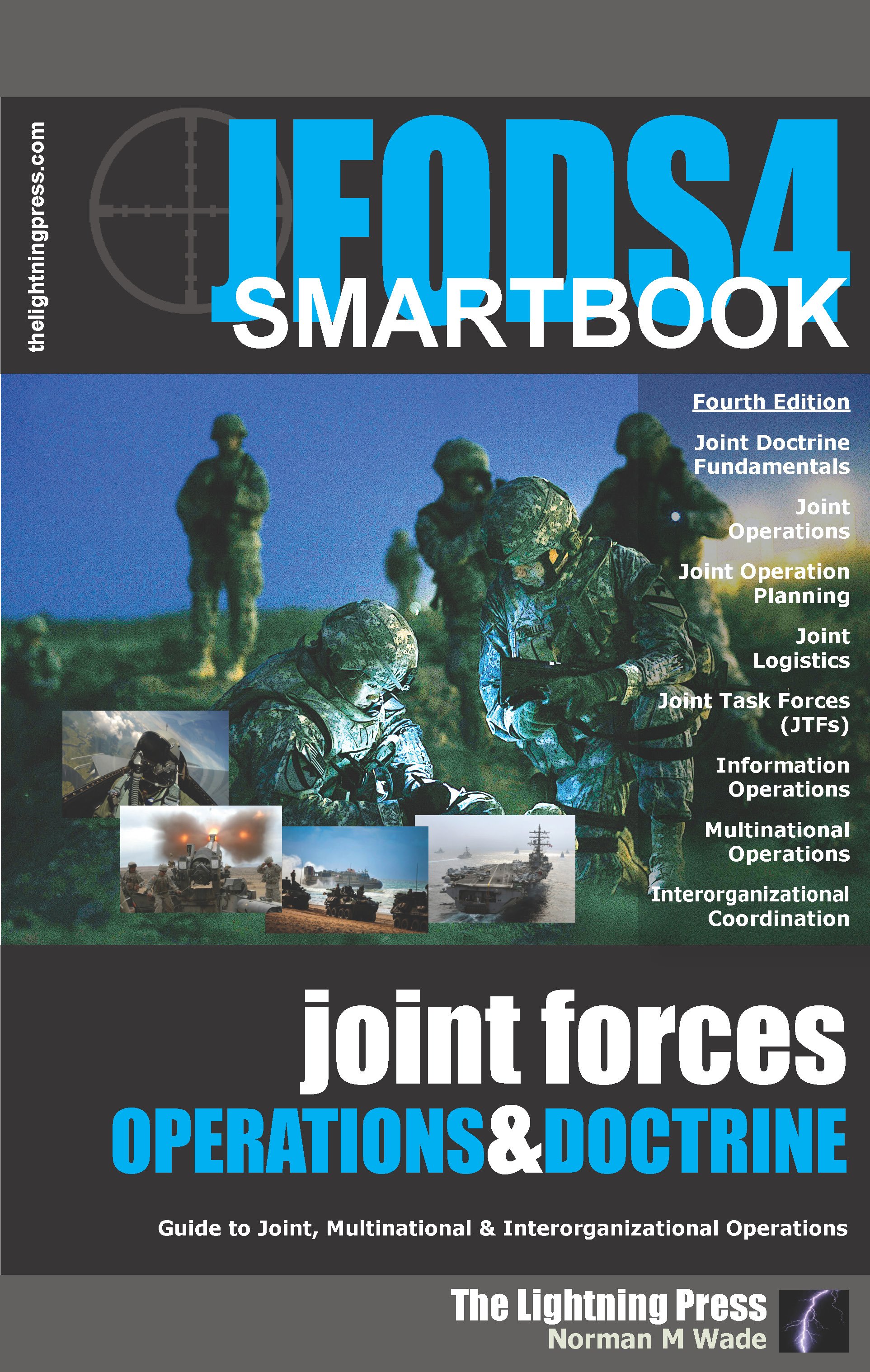
JFODS4: The Joint Forces Operations & Doctrine SMARTbook, 4th Ed. (PREVIOUS EDITION)
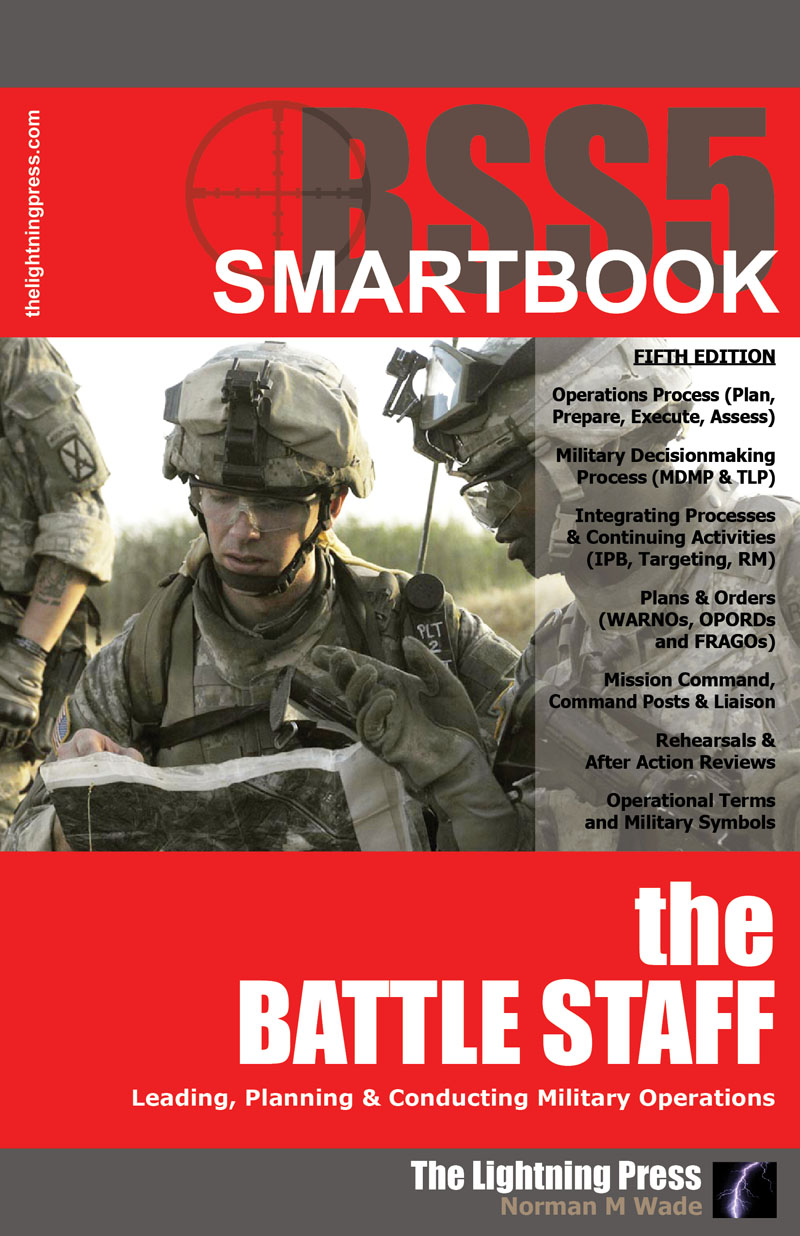
BSS5: The Battle Staff SMARTbook, 5th Ed. (PREVIOUS EDITION)
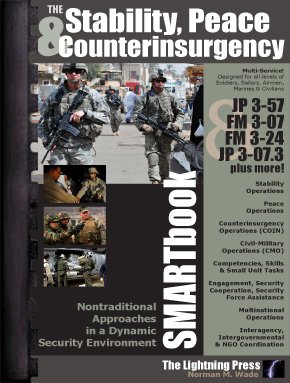
The Stability, Peace & Counterinsurgency SMARTbook (PREVIOUS EDITION)
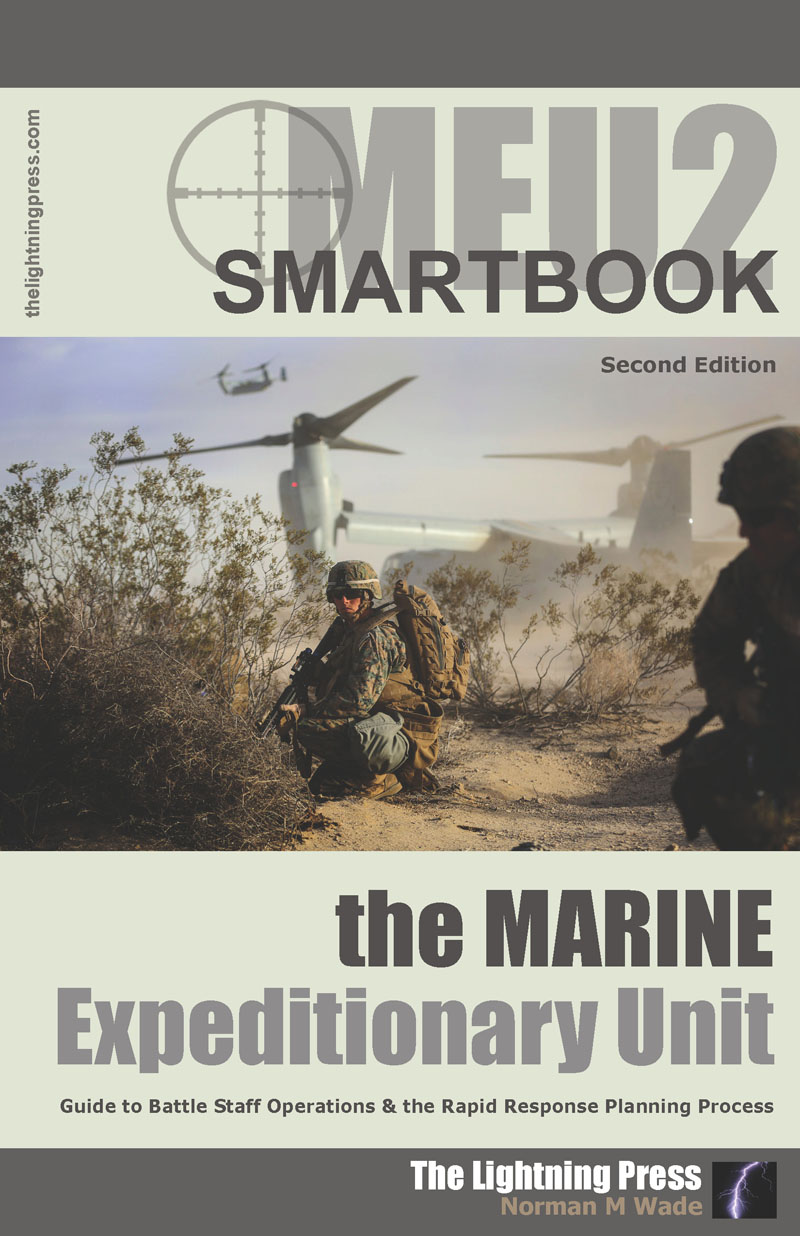
MEU2: The Marine Expeditionary Unit SMARTbook, 2nd Ed. (PREVIOUS EDITION)
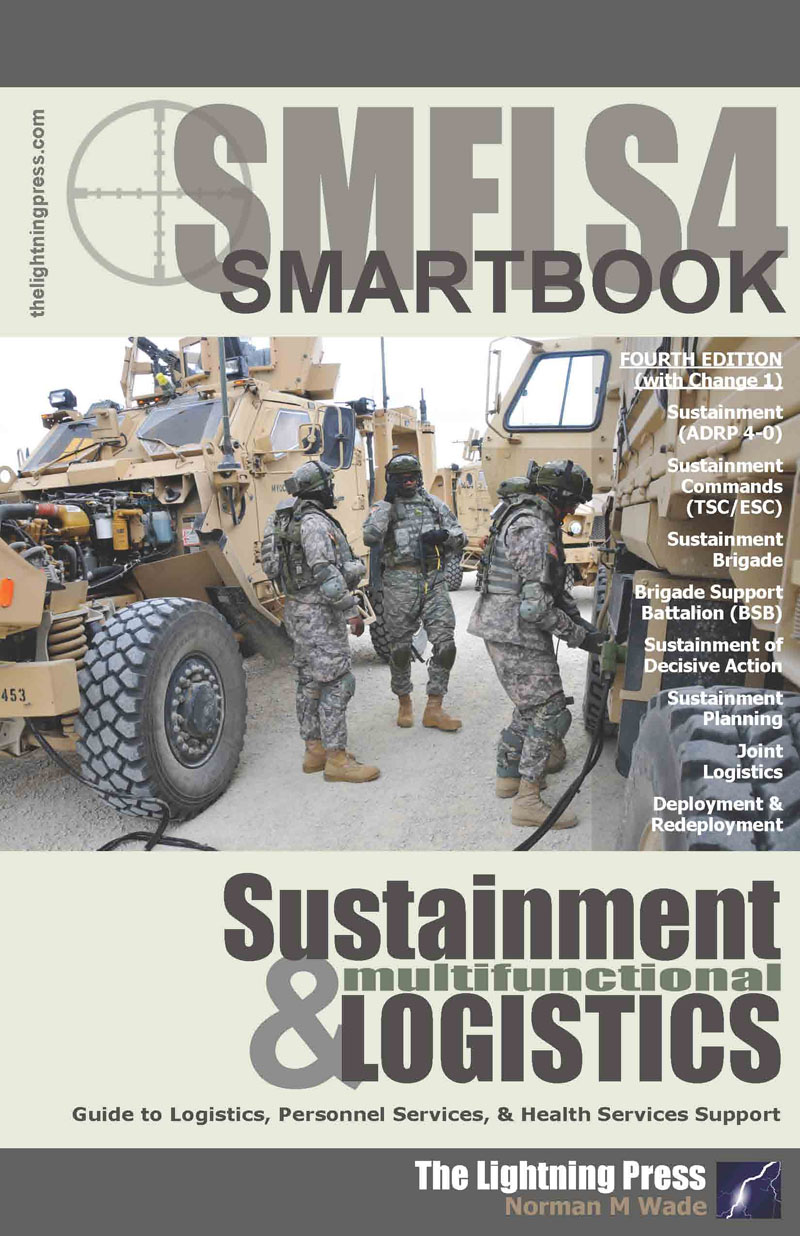
SMFLS4: The Sustainment & Multifunctional Logistics SMARTbook, 4th Ed. w/Change 1 (PREVIOUS EDITION)
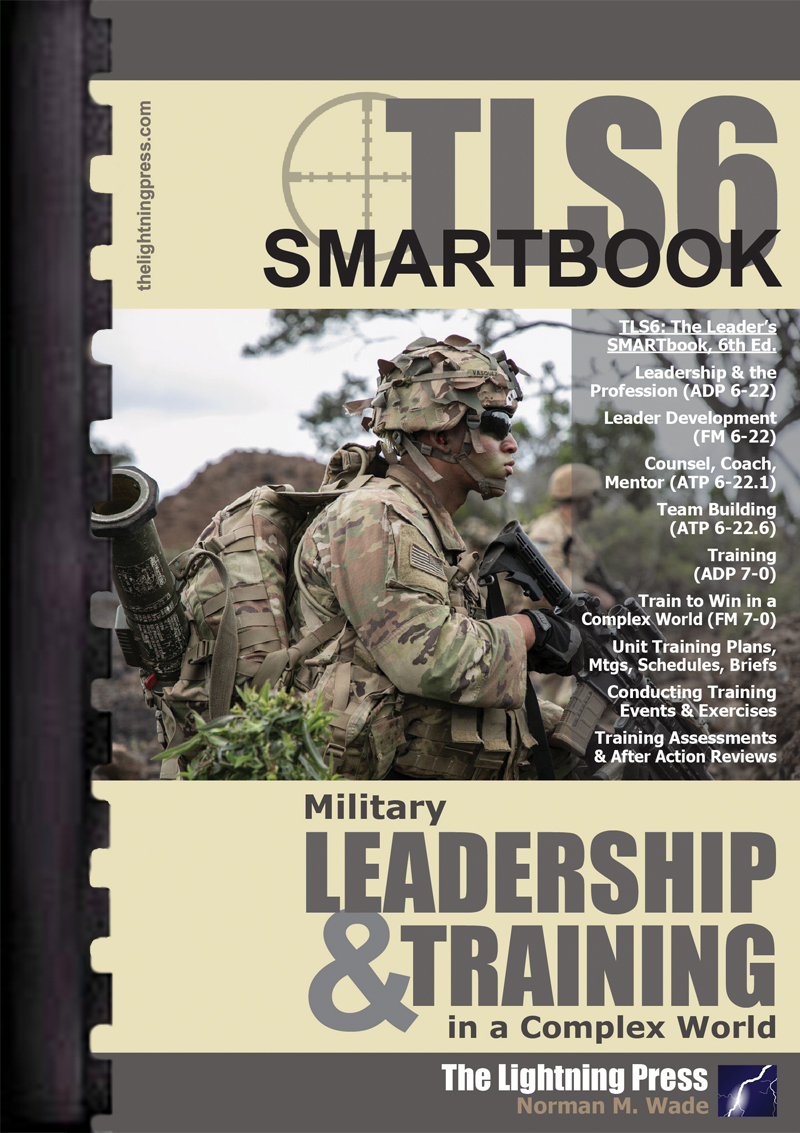
TLS6: The Leader’s SMARTbook, 6th Ed. (PREVIOUS EDITION)
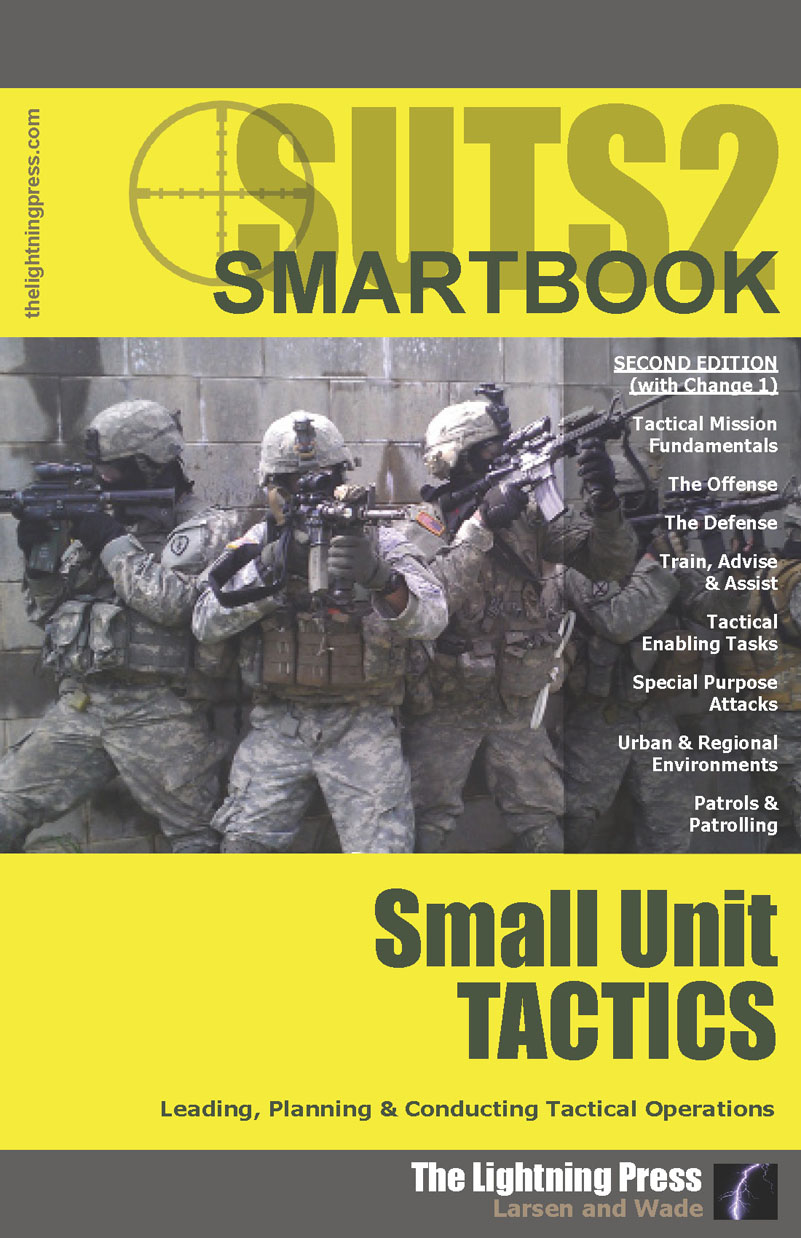
SUTS2: The Small Unit Tactics SMARTbook, 2nd Ed. w/Change 1 (PREVIOUS EDITION)
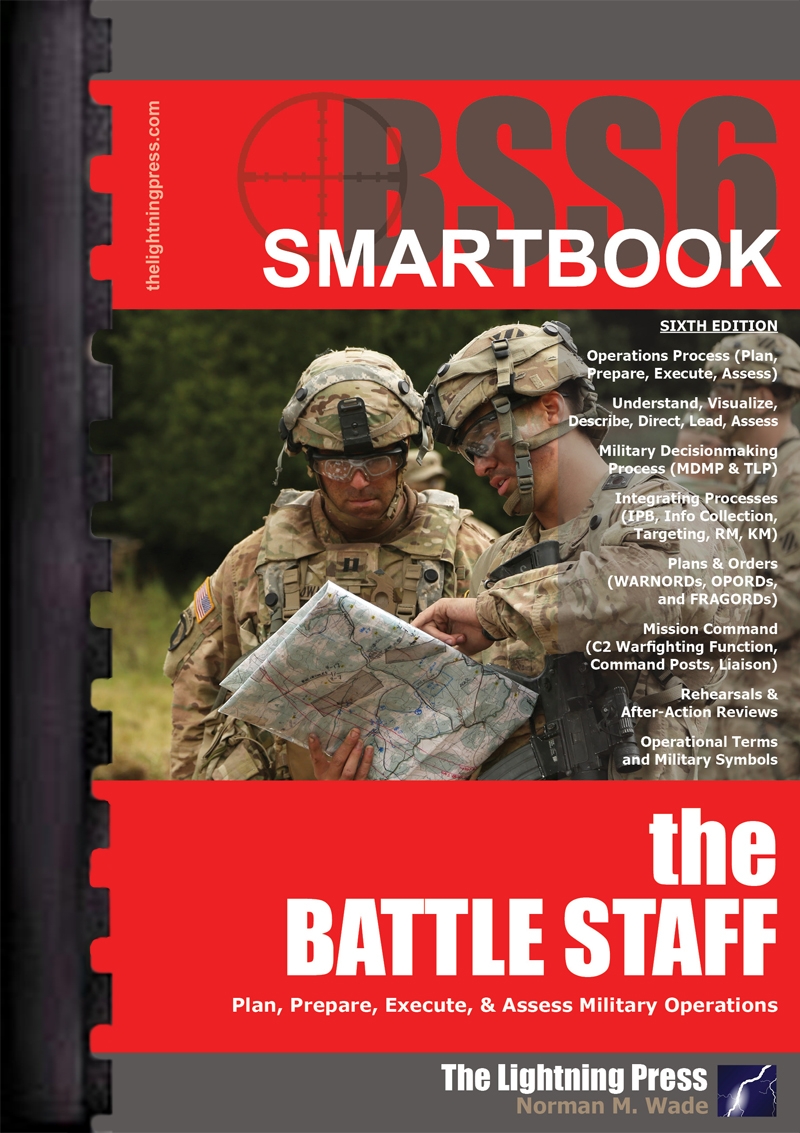
BSS6: The Battle Staff SMARTbook, 6th Ed. (PREVIOUS EDITION)
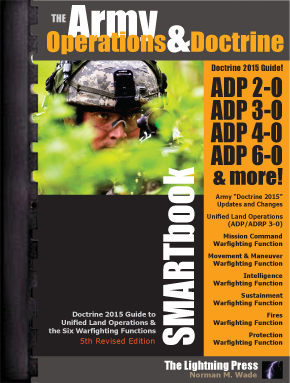
The Army Operations & Doctrine SMARTbook, 5th Rev. Ed. (PREVIOUS EDITION)
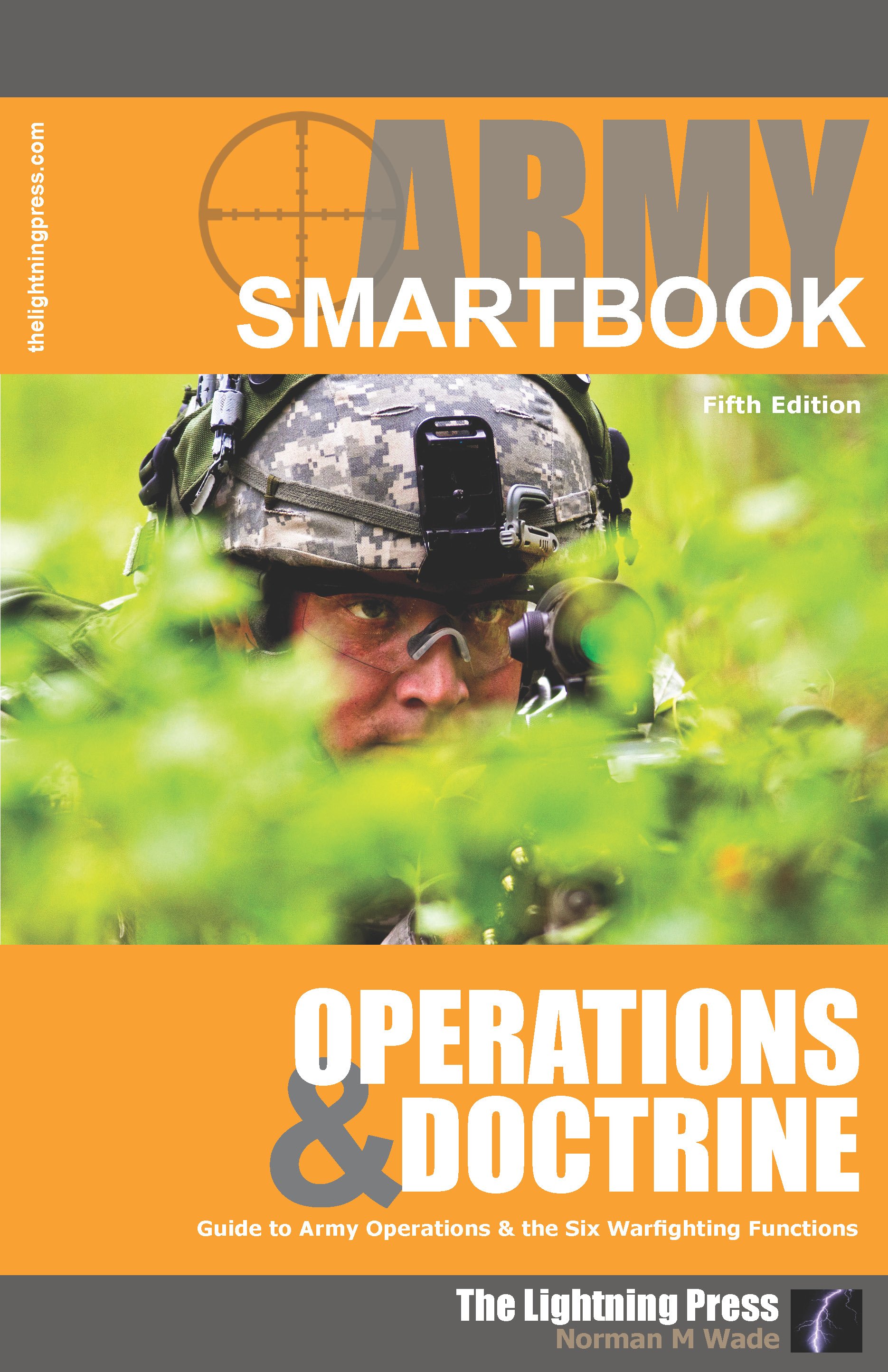
AODS5: The Army Operations & Doctrine SMARTbook, 5th Ed. (PREVIOUS EDITION)
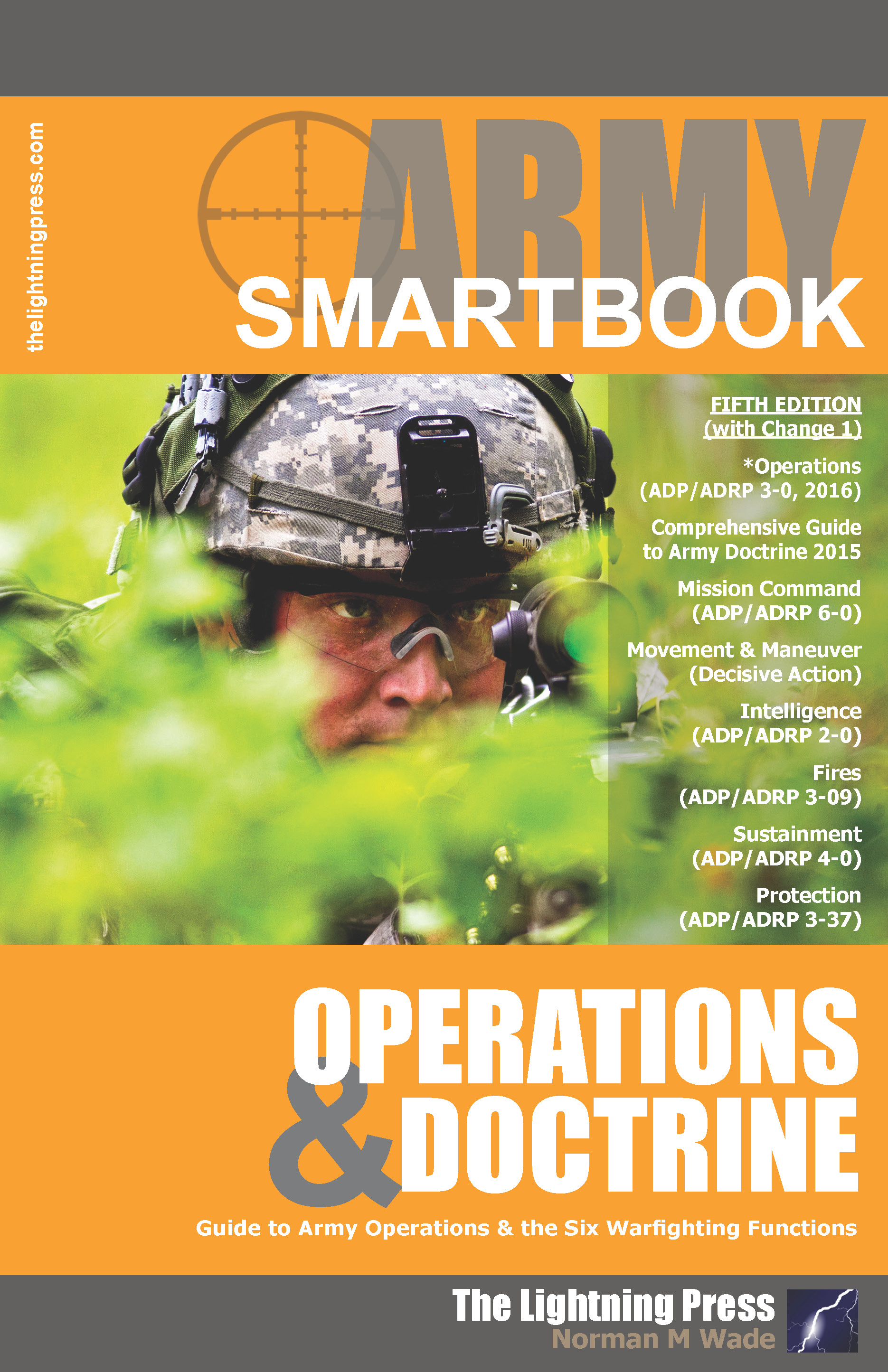
AODS5: The Army Operations & Doctrine SMARTbook, 5th Ed. w/Change 1 (PREVIOUS EDITION)
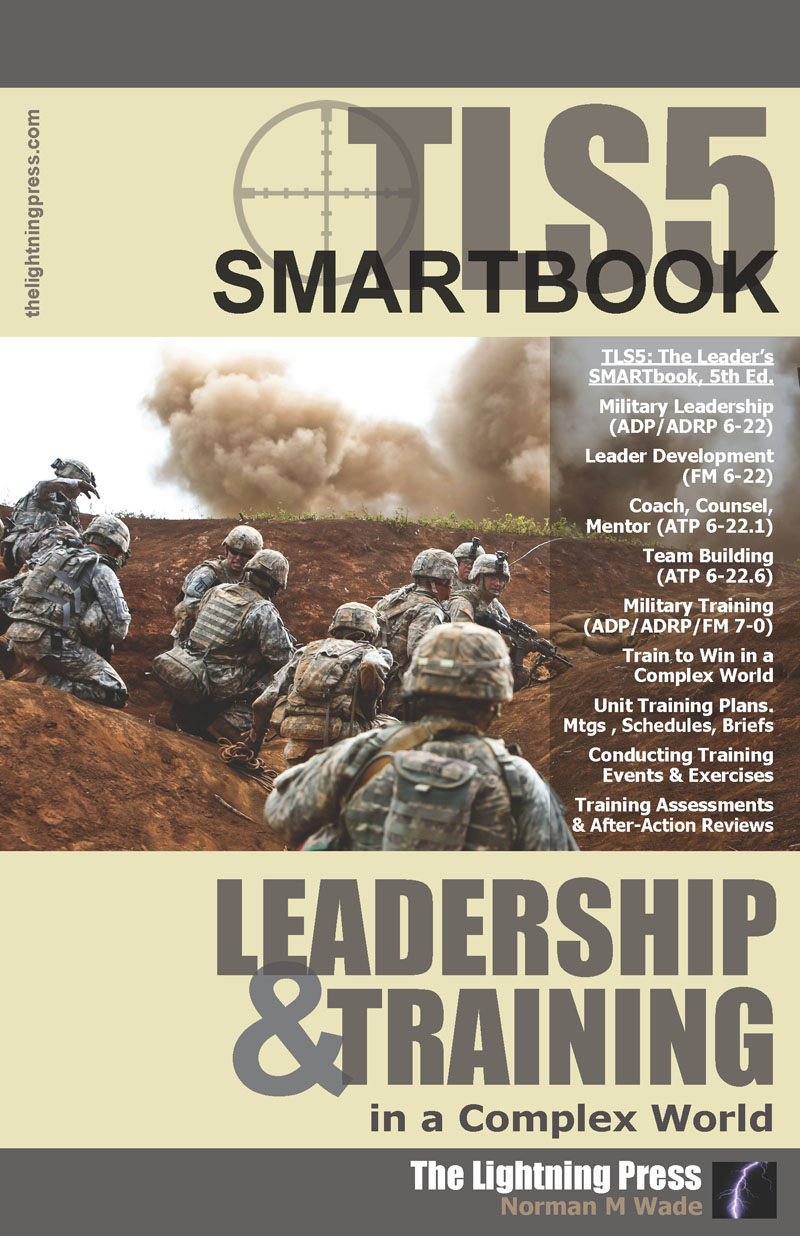
TLS5: The Leader's SMARTbook, 5th Ed. (PREVIOUS EDITION)
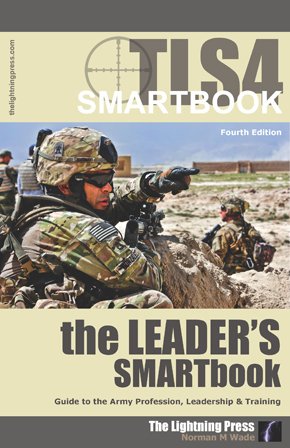
TLS4: The Leader’s SMARTbook, 4th Rev. Ed. (PREVIOUS EDITION)
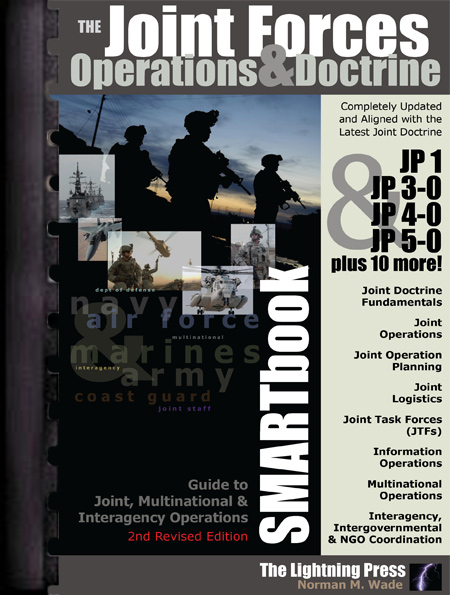
The Joint Forces Operations & Doctrine SMARTbook, 2nd Rev. Ed. (PREVIOUS EDITION)
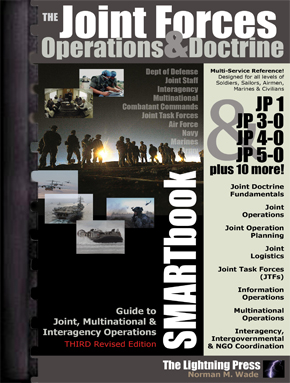
The Joint Forces Operations & Doctrine SMARTbook, 3rd Rev. Ed. (PREVIOUS EDITION)

AODS6-1: The Army Operations & Doctrine SMARTbook, 6th Ed. w/SMARTupdate 1 (PREVIOUS EDITION)
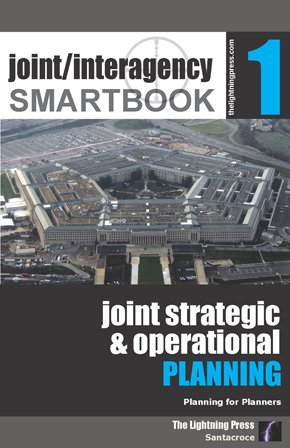
Joint/Interagency SMARTbook 1 – Joint Strategic & Operational Planning (PREVIOUS EDITION)
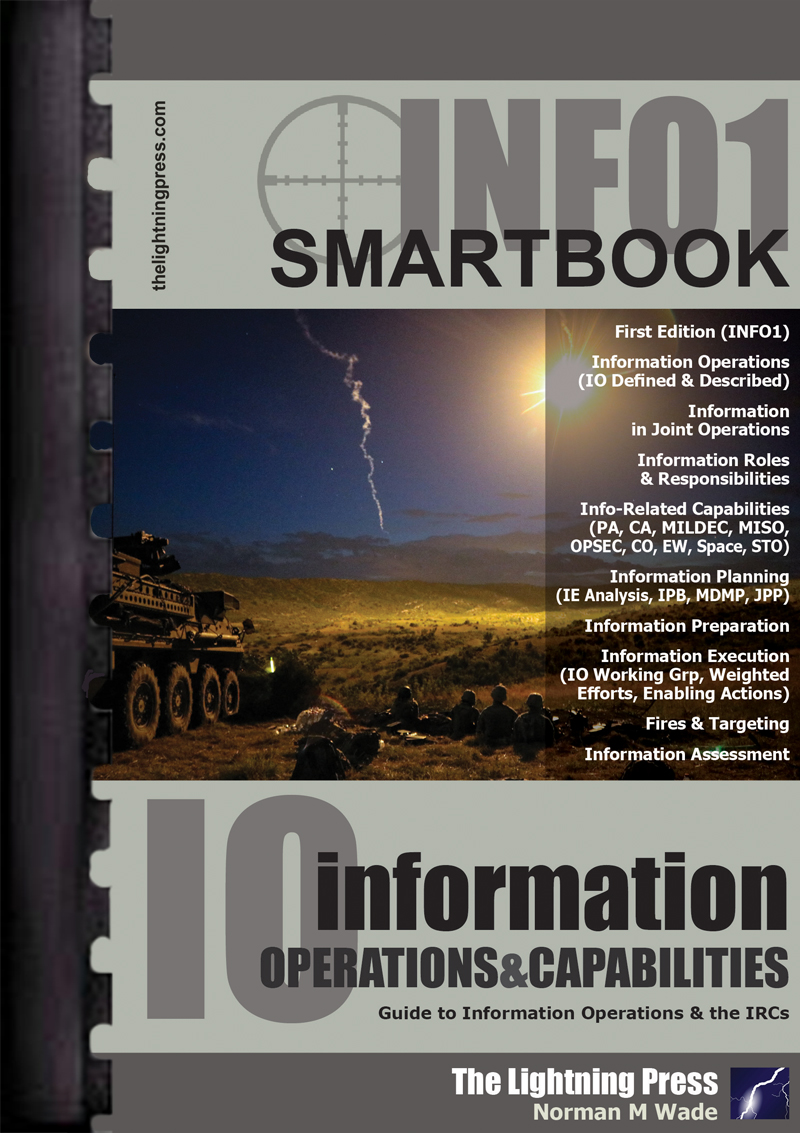
INFO1: The Information Operations & Capabilities SMARTbook (PREVIOUS EDITION)
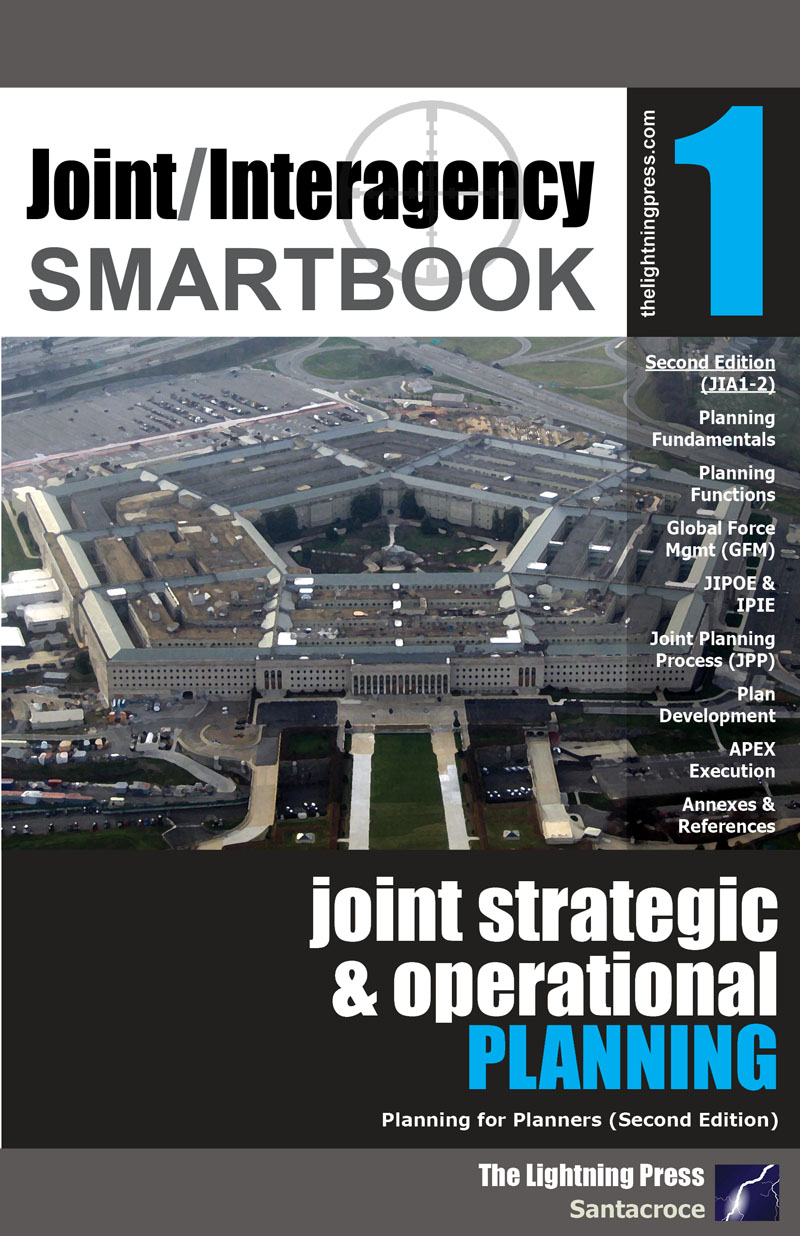
Joint/Interagency SMARTbook 1 – Joint Strategic & Operational Planning, 2nd Ed. (PREVIOUS EDITION)
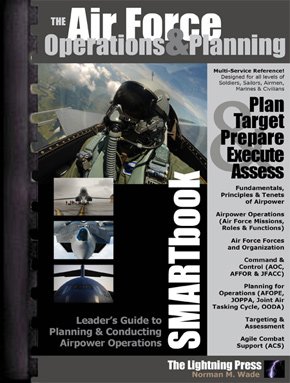
The Air Force Operations & Planning SMARTbook w/SMARTupdate 1 (PREVIOUS EDITION)
Military Reference: Multi-Service & Specialty

BSS7: The Battle Staff SMARTbook, 7th Ed.

SUTS3: The Small Unit Tactics SMARTbook, 3rd Ed.
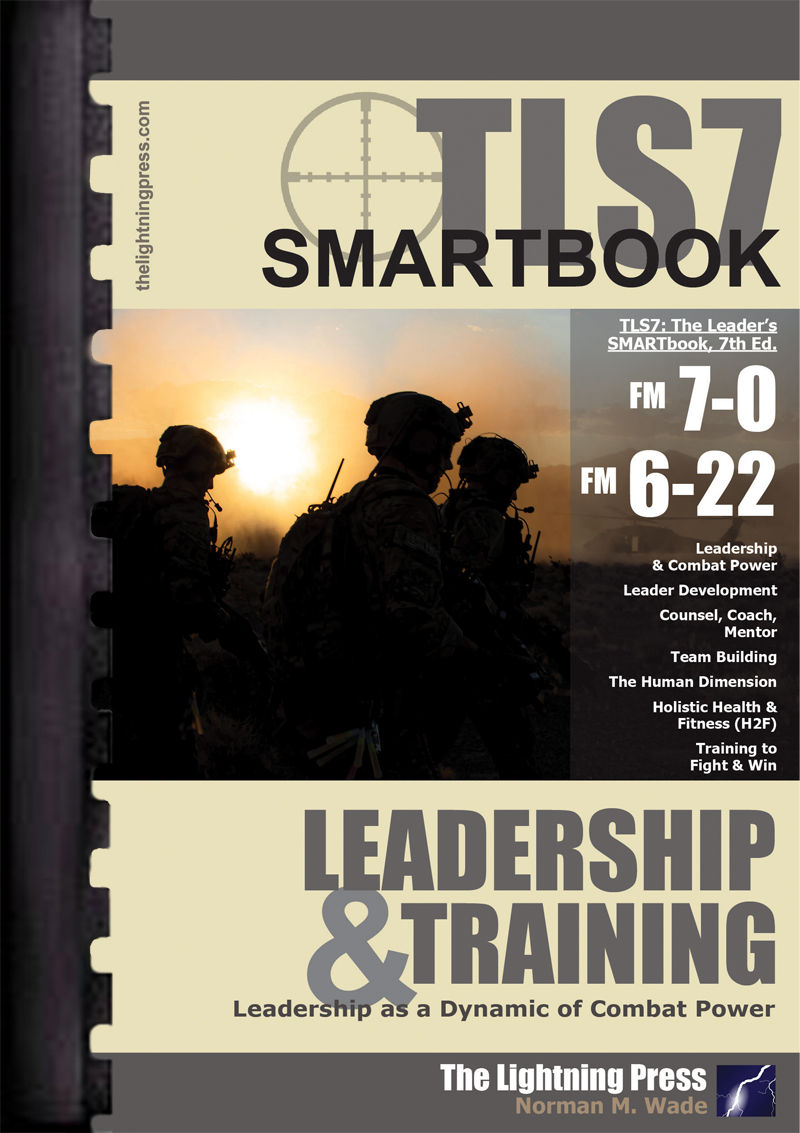
TLS7: The Leader’s SMARTbook, 7th Ed.
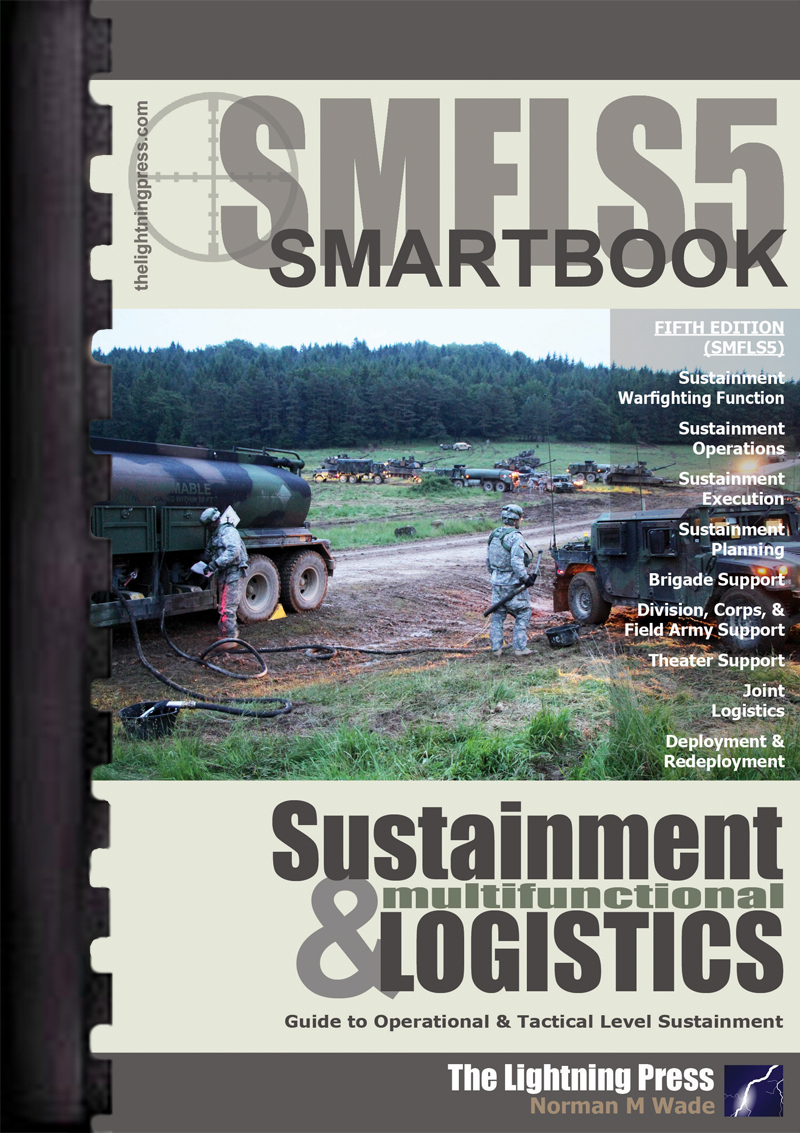
SMFLS5: The Sustainment & Multifunctional Logistics SMARTbook, 5th Ed.
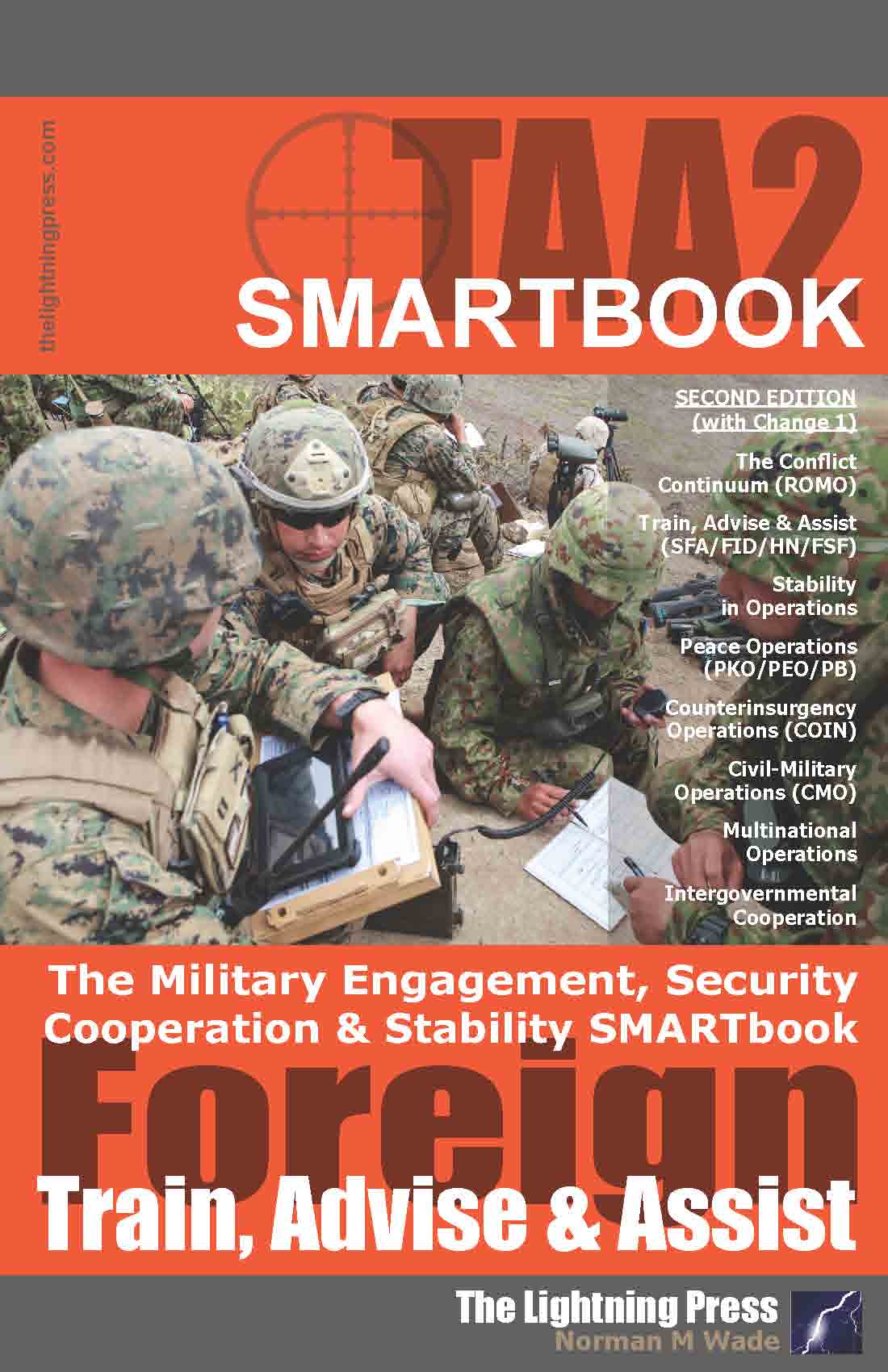
TAA2: The Military Engagement, Security Cooperation & Stability SMARTbook, 2nd Ed. (w/Change 1)
Military Reference: Service-level
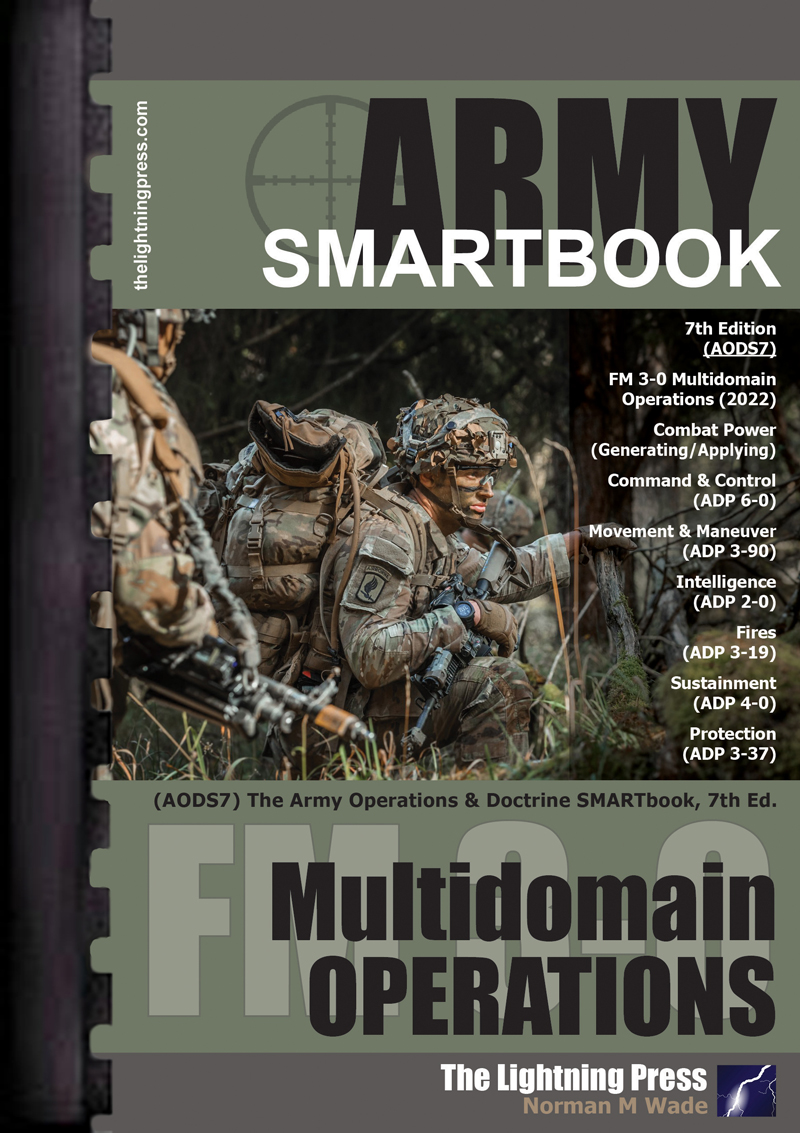
AODS7: The Army Operations & Doctrine SMARTbook, 7th Ed.
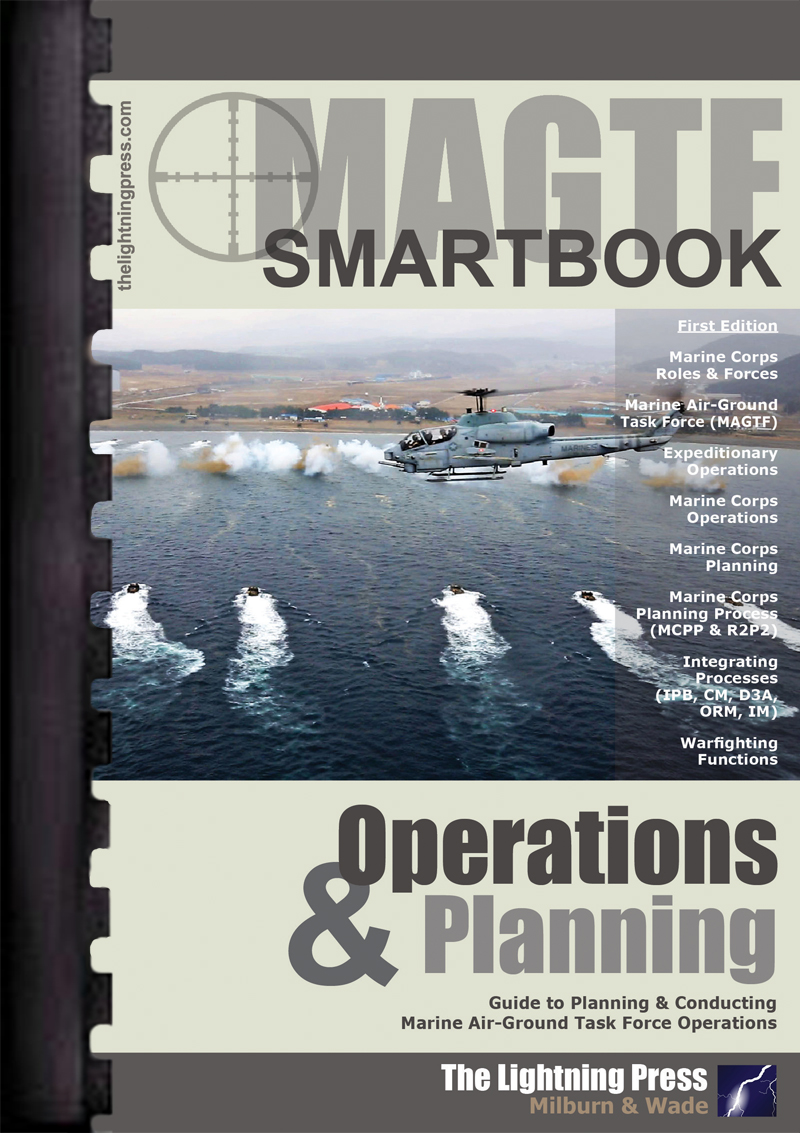
MAGTF: The MAGTF Operations & Planning SMARTbook
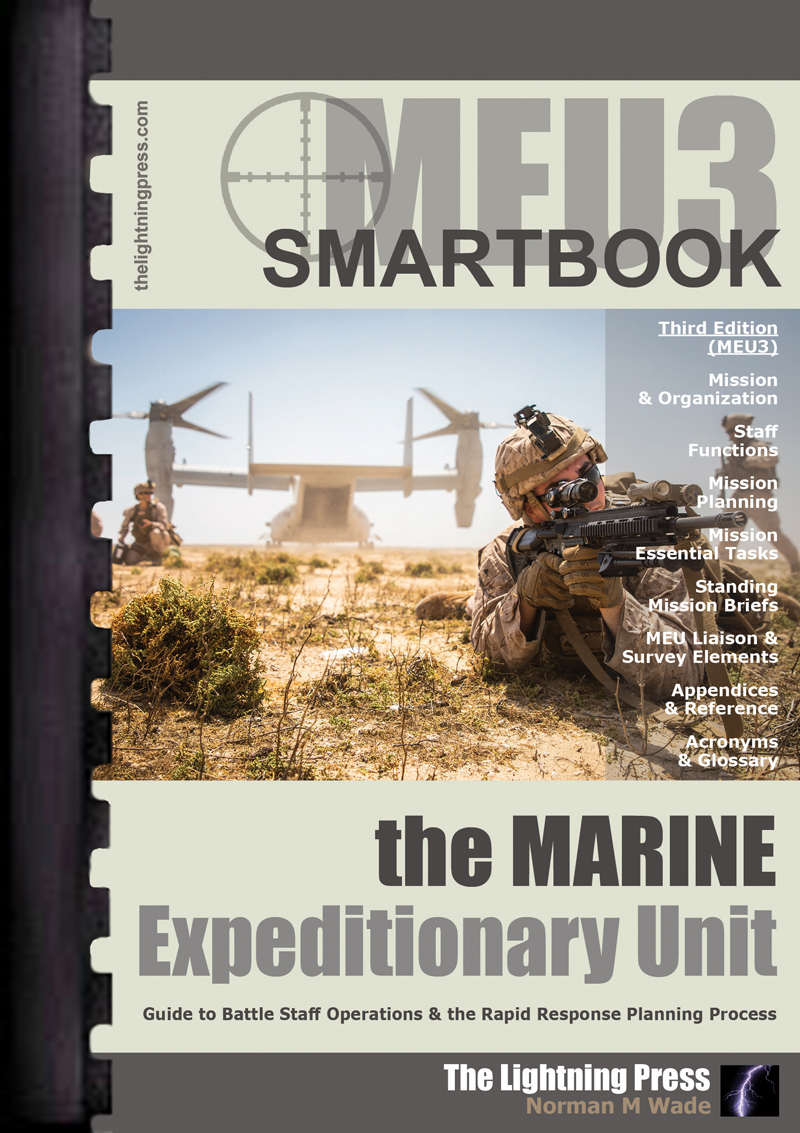
MEU3: The Marine Expeditionary Unit SMARTbook, 3rd Ed.
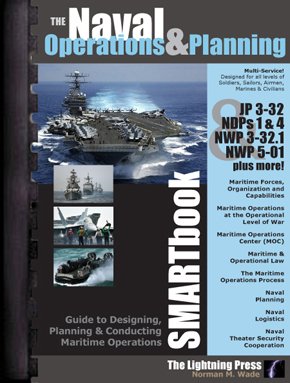
The Naval Operations & Planning SMARTbook
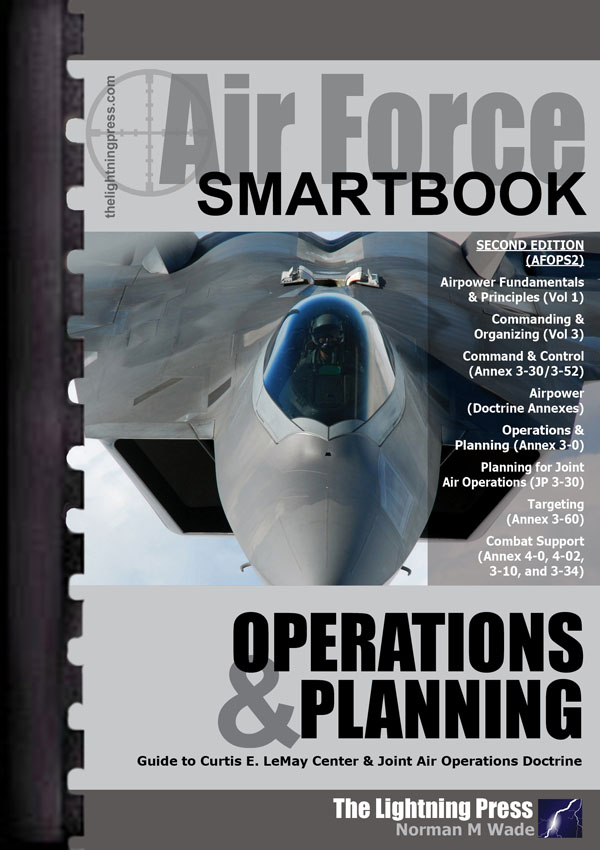
AFOPS2: The Air Force Operations & Planning SMARTbook, 2nd Ed.
Joint, Strategic, Interagency, & National Security
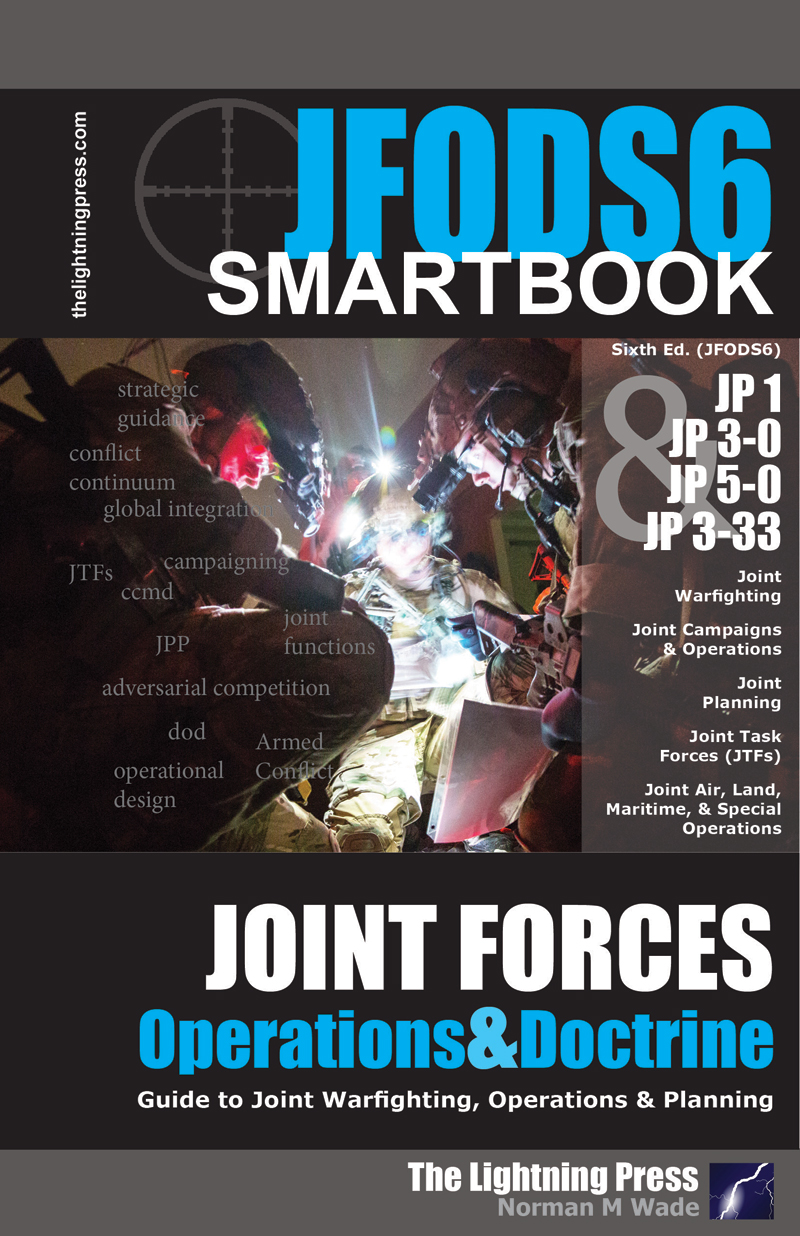
JFODS6: The Joint Forces Operations & Doctrine SMARTbook, 6th Ed.
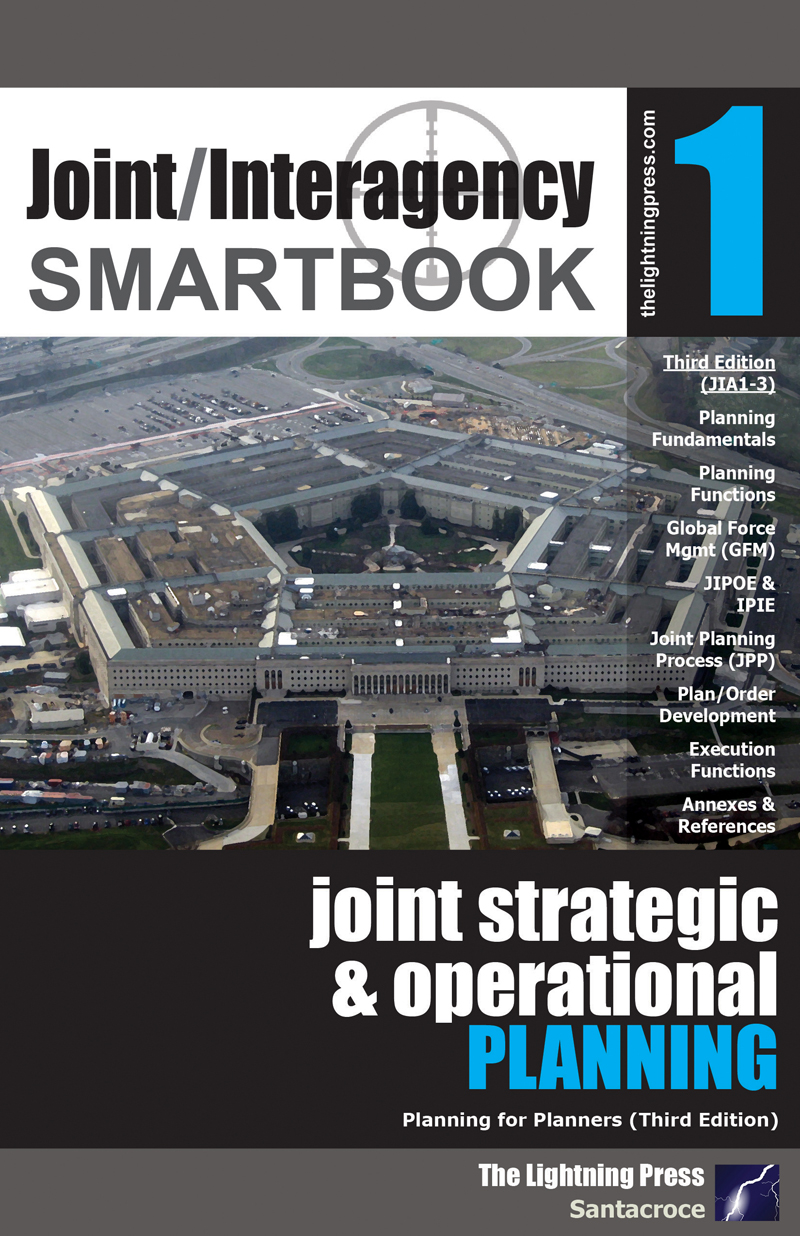
Joint/Interagency SMARTbook 1 – Joint Strategic & Operational Planning, 3rd Ed.
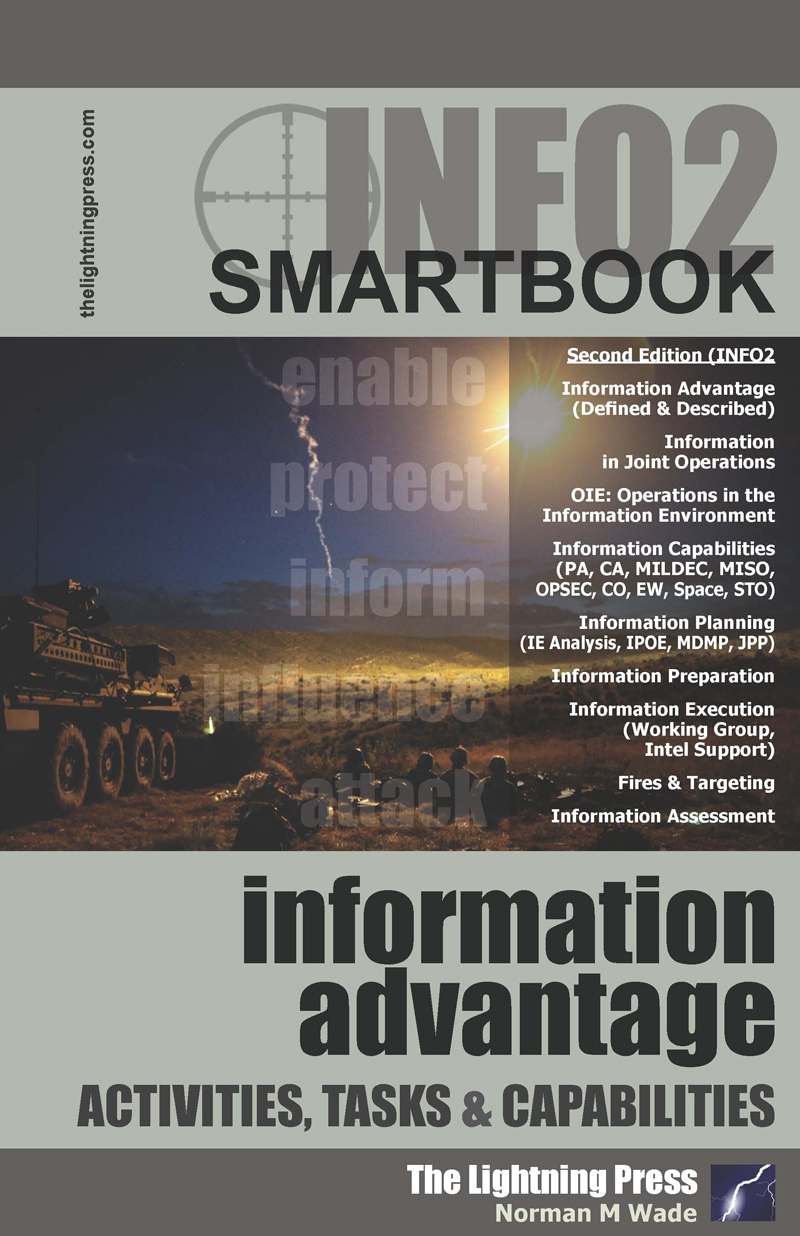
INFO2 SMARTbook: Information Advantage
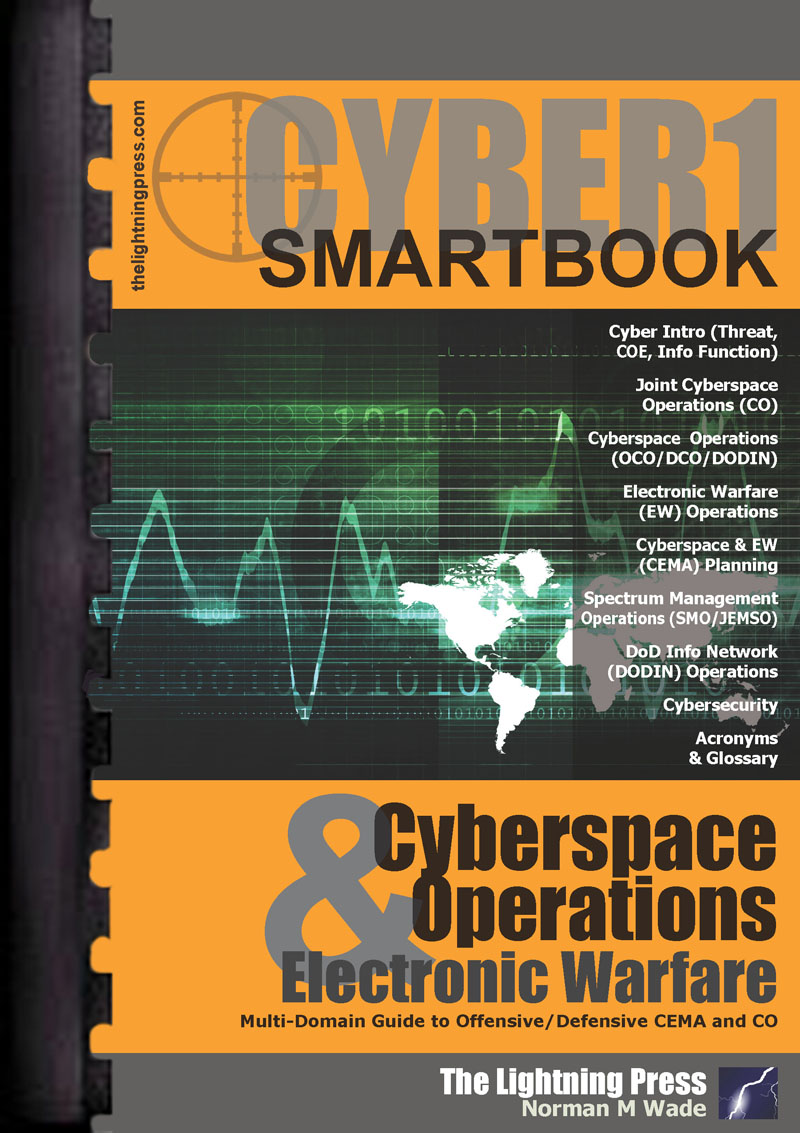
CYBER1-1: The Cyberspace Operations & Electronic Warfare SMARTbook (w/SMARTupdate 1)
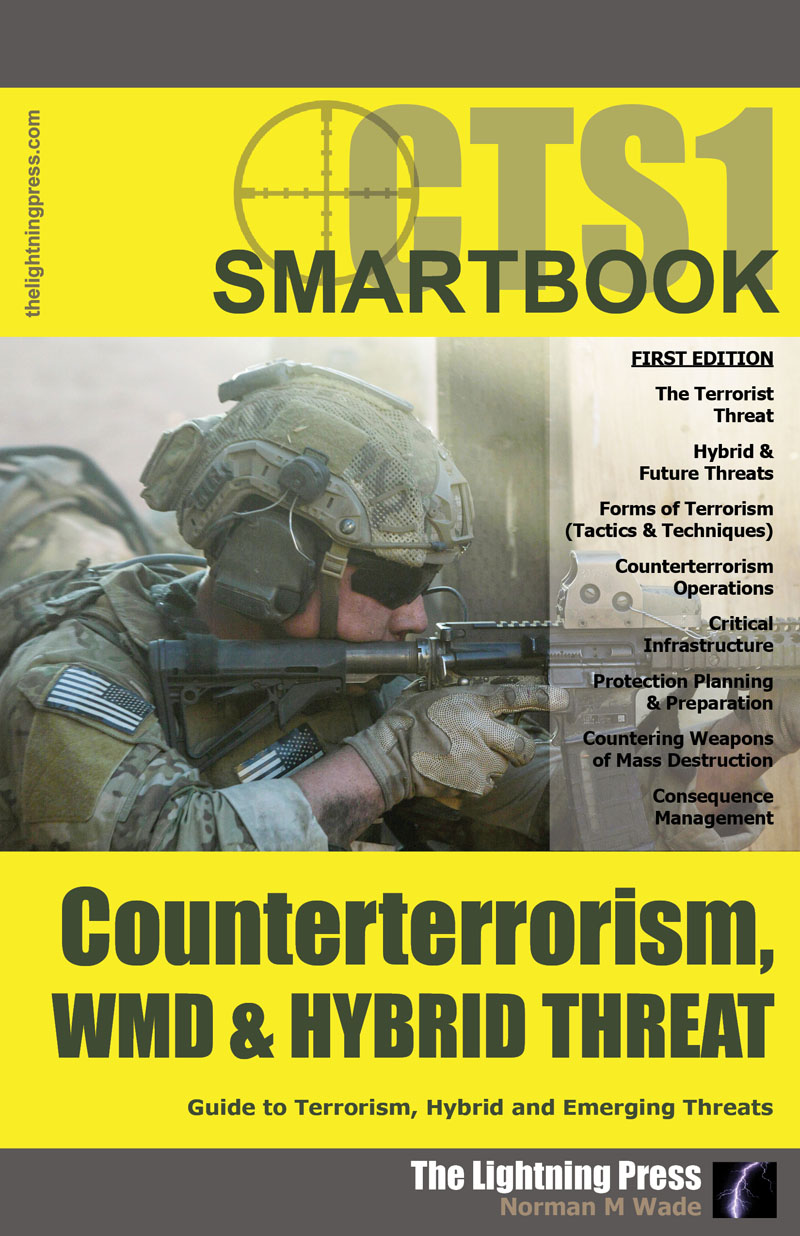
CTS1: The Counterterrorism, WMD & Hybrid Threat SMARTbook
Threat, OPFOR, Regional & Cultural
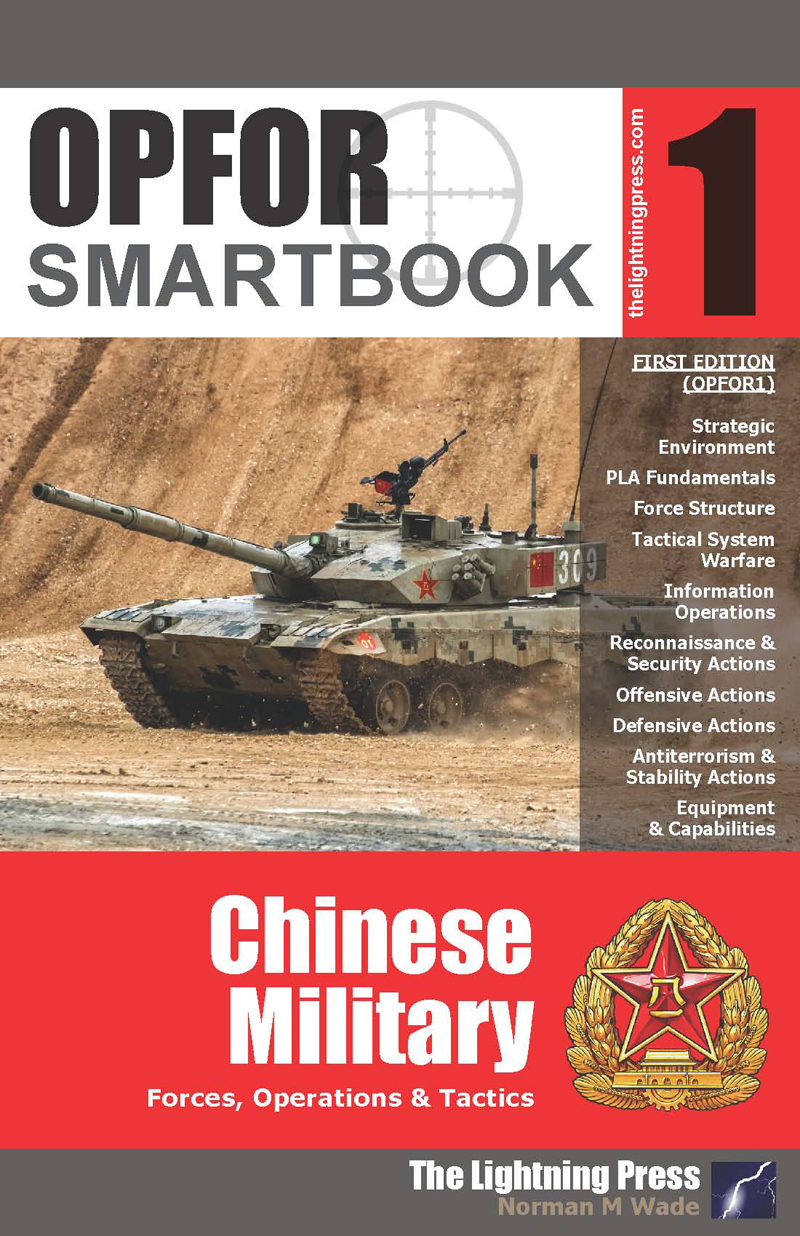
OPFOR SMARTbook 1 - Chinese Military
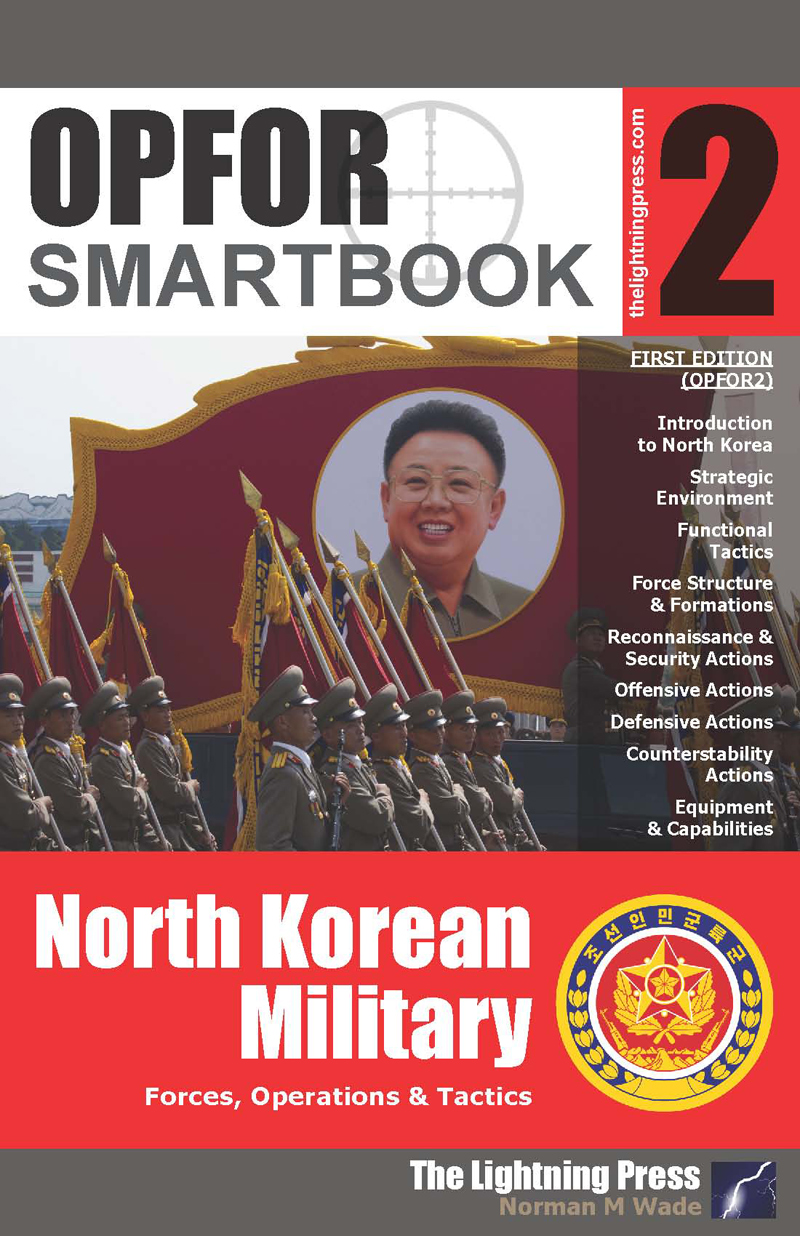
OPFOR SMARTbook 2 - North Korean Military
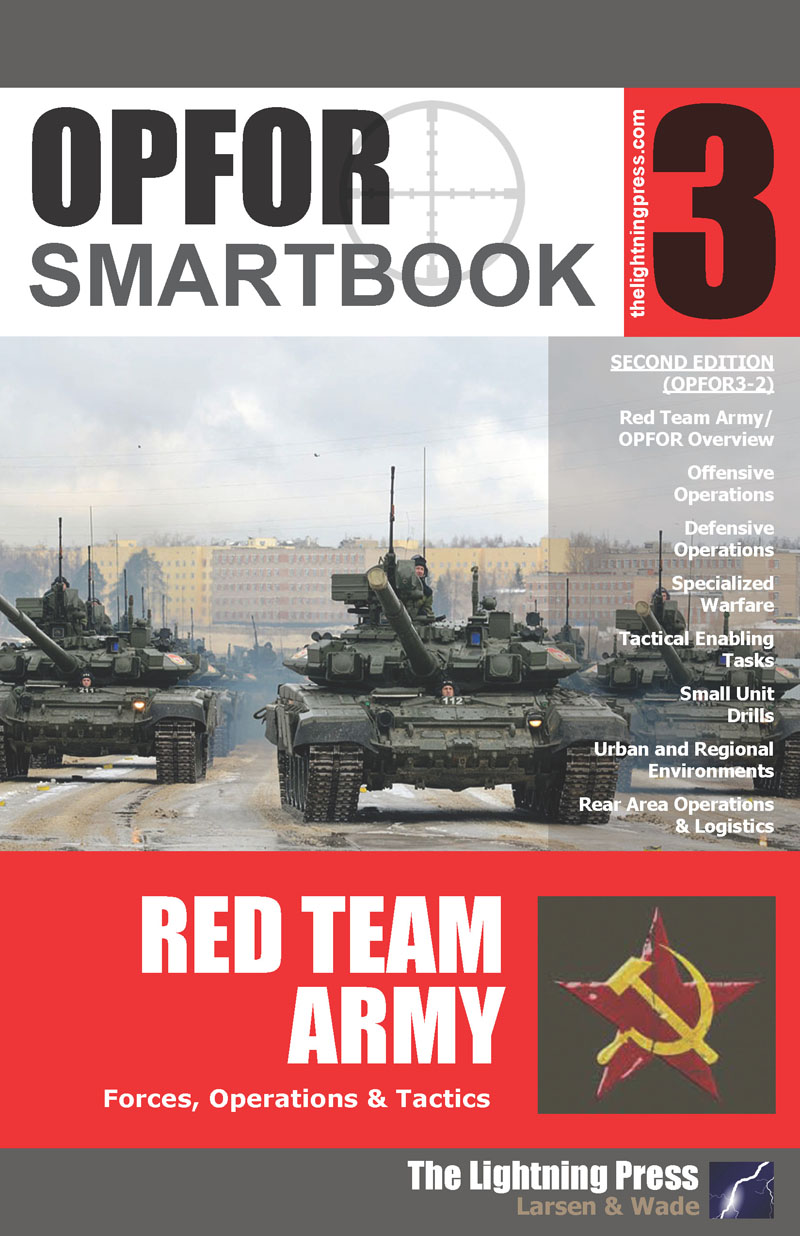
OPFOR SMARTbook 3 - Red Team Army, 2nd Ed.
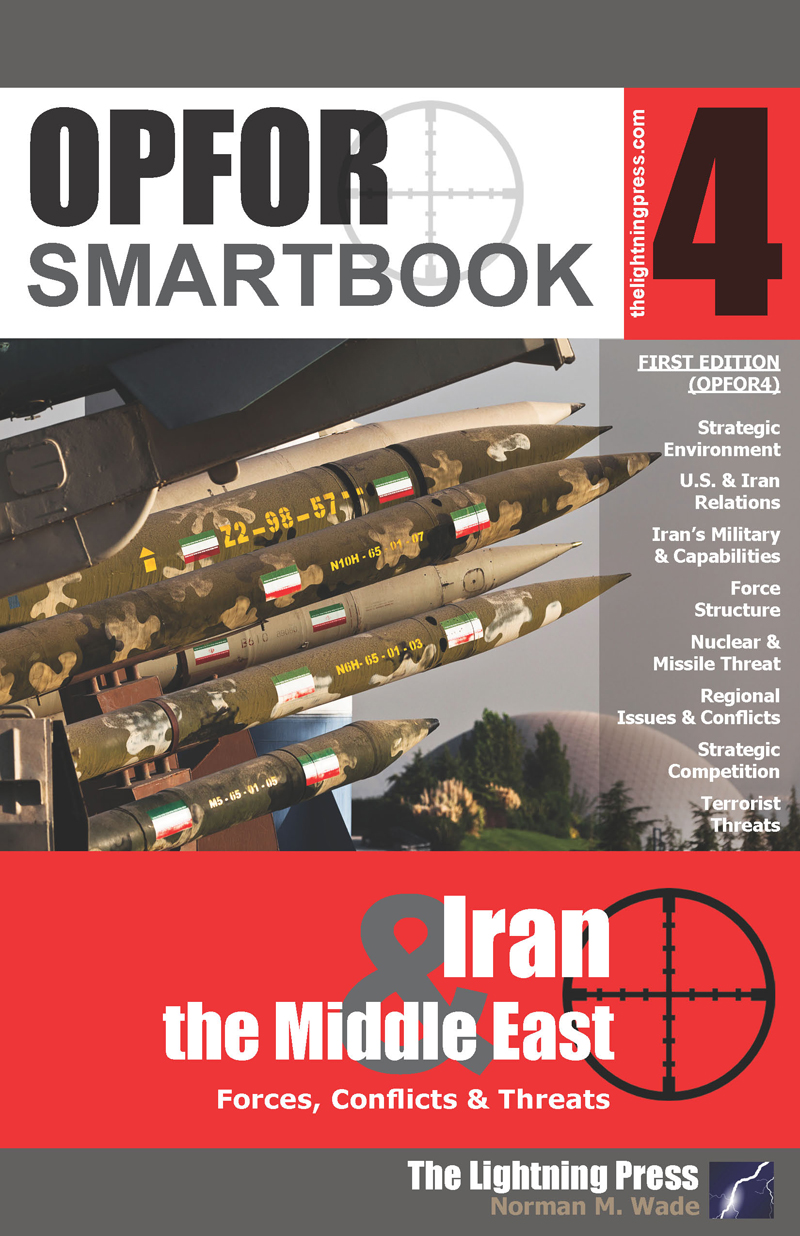
OPFOR SMARTbook 4 - Iran & the Middle East
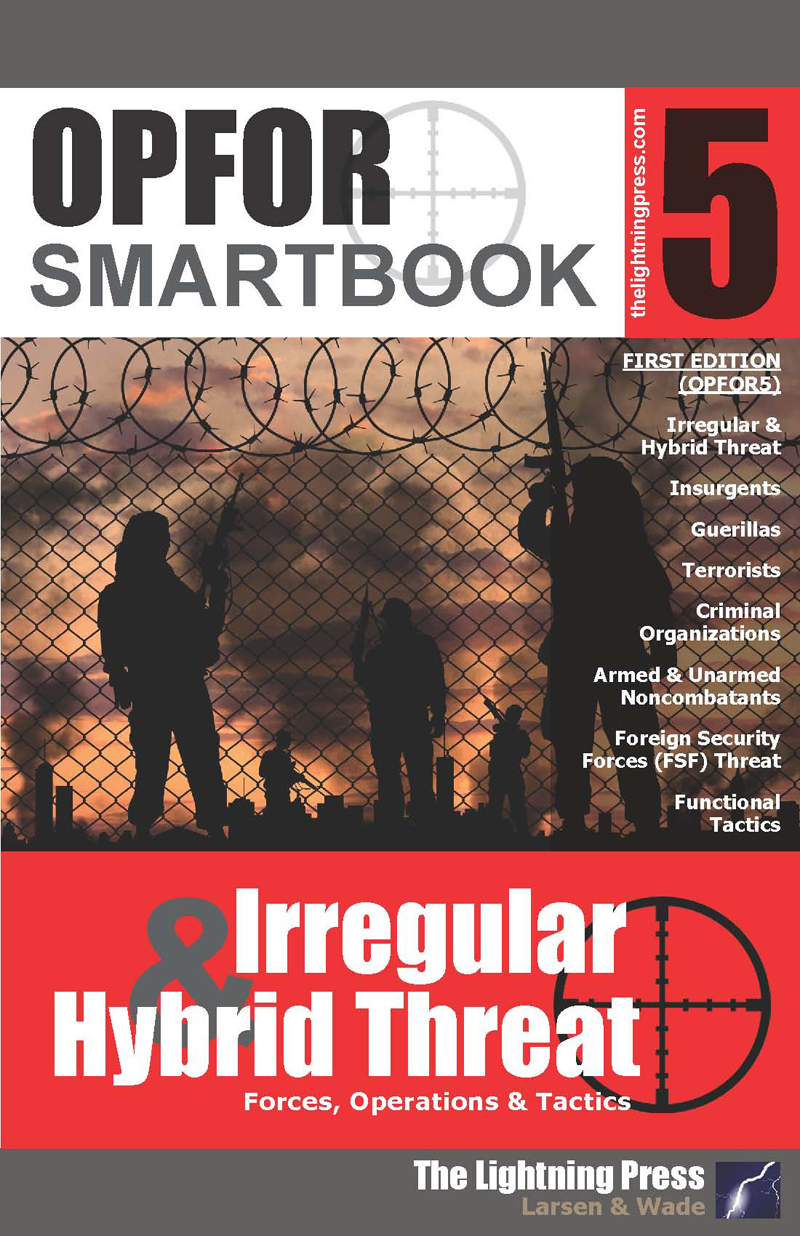
OPFOR SMARTbook 5 - Irregular & Hybrid Threat
Homeland Defense, DSCA, & Disaster Response
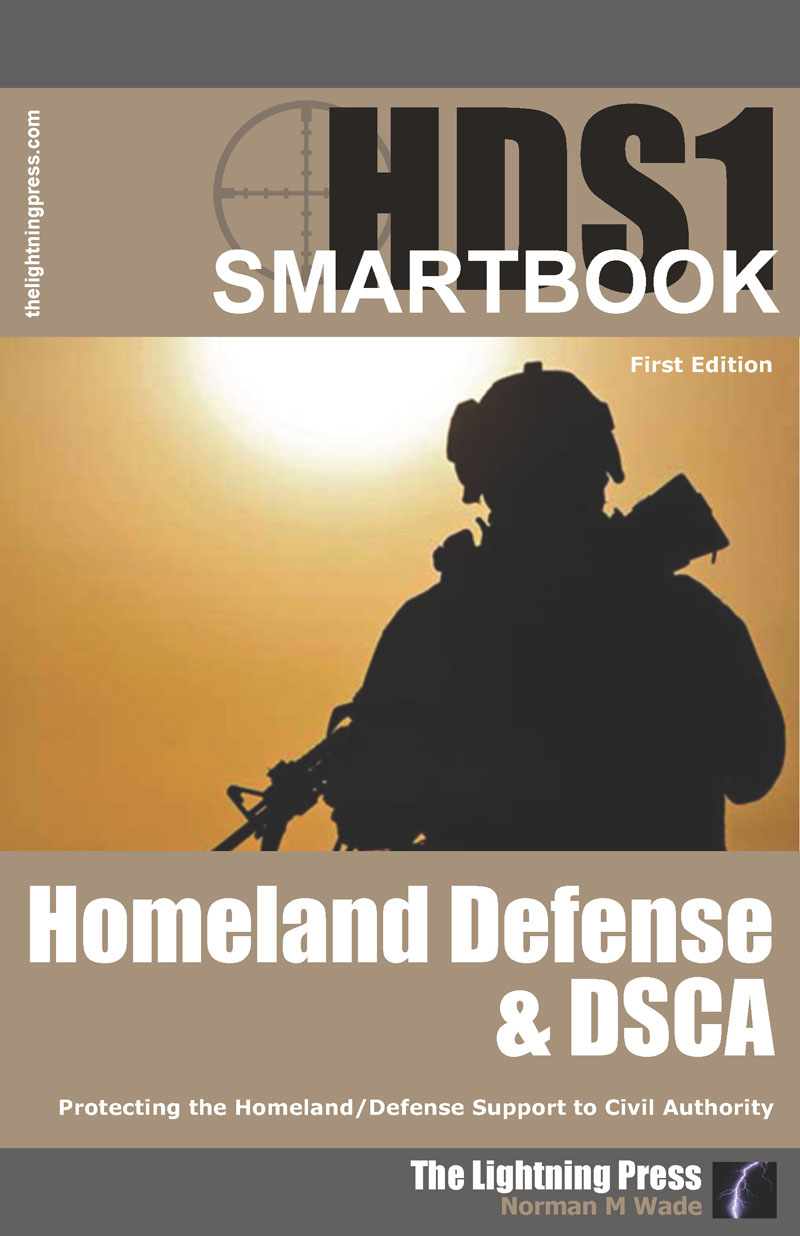
HDS1: The Homeland Defense & DSCA SMARTbook
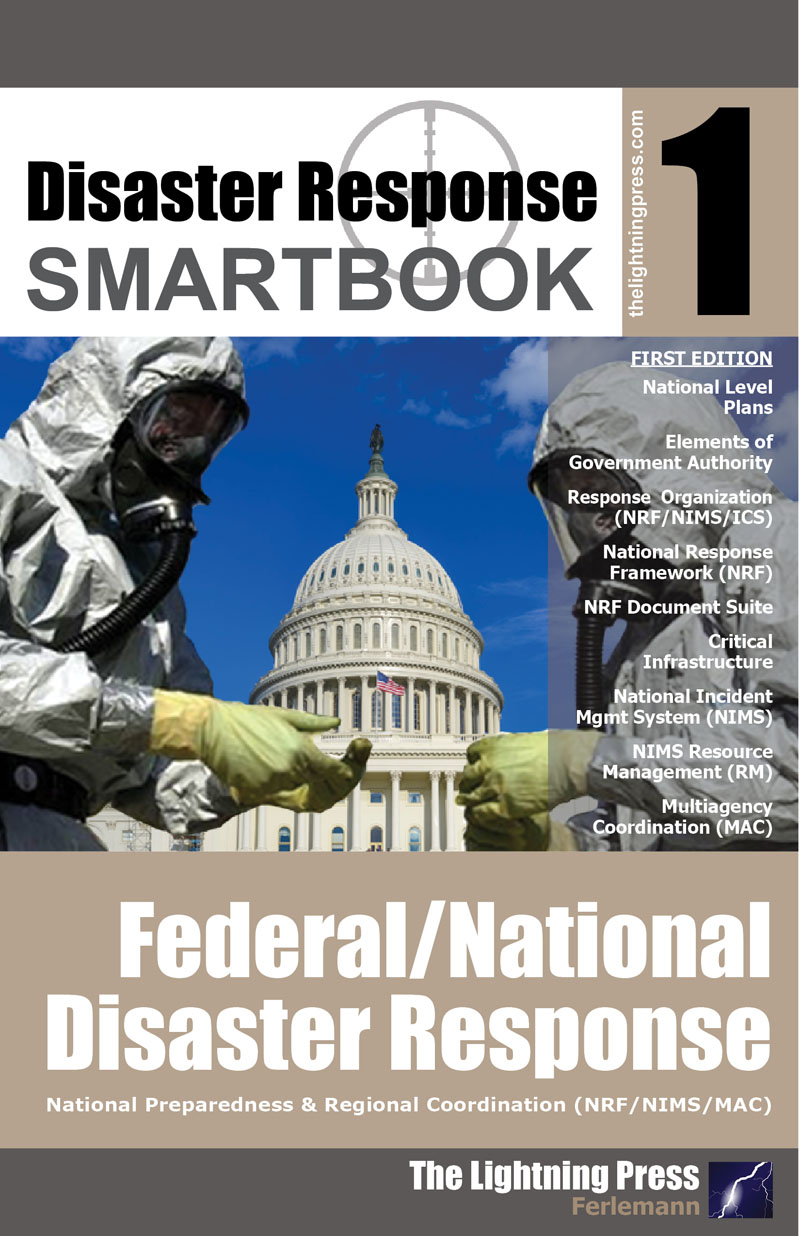
Disaster Response SMARTbook 1 – Federal/National Disaster Response
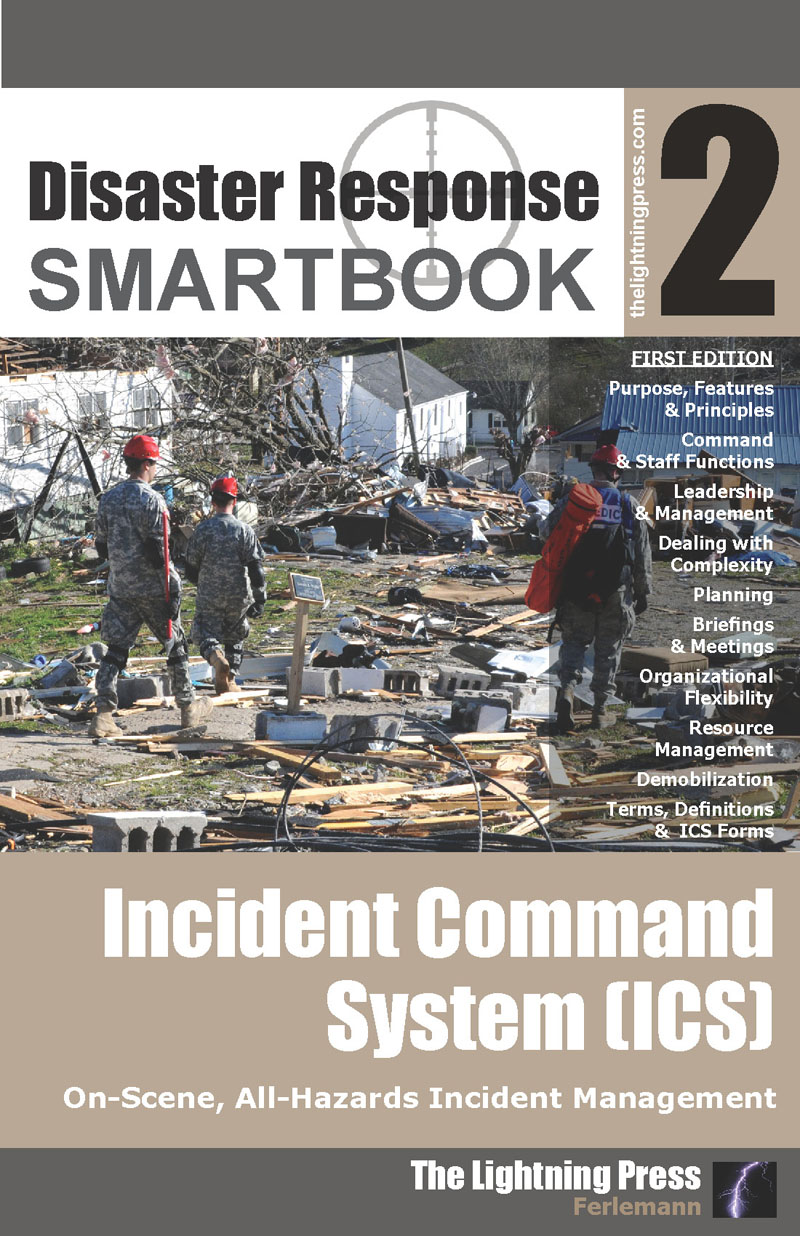
Disaster Response SMARTbook 2 – Incident Command System (ICS)
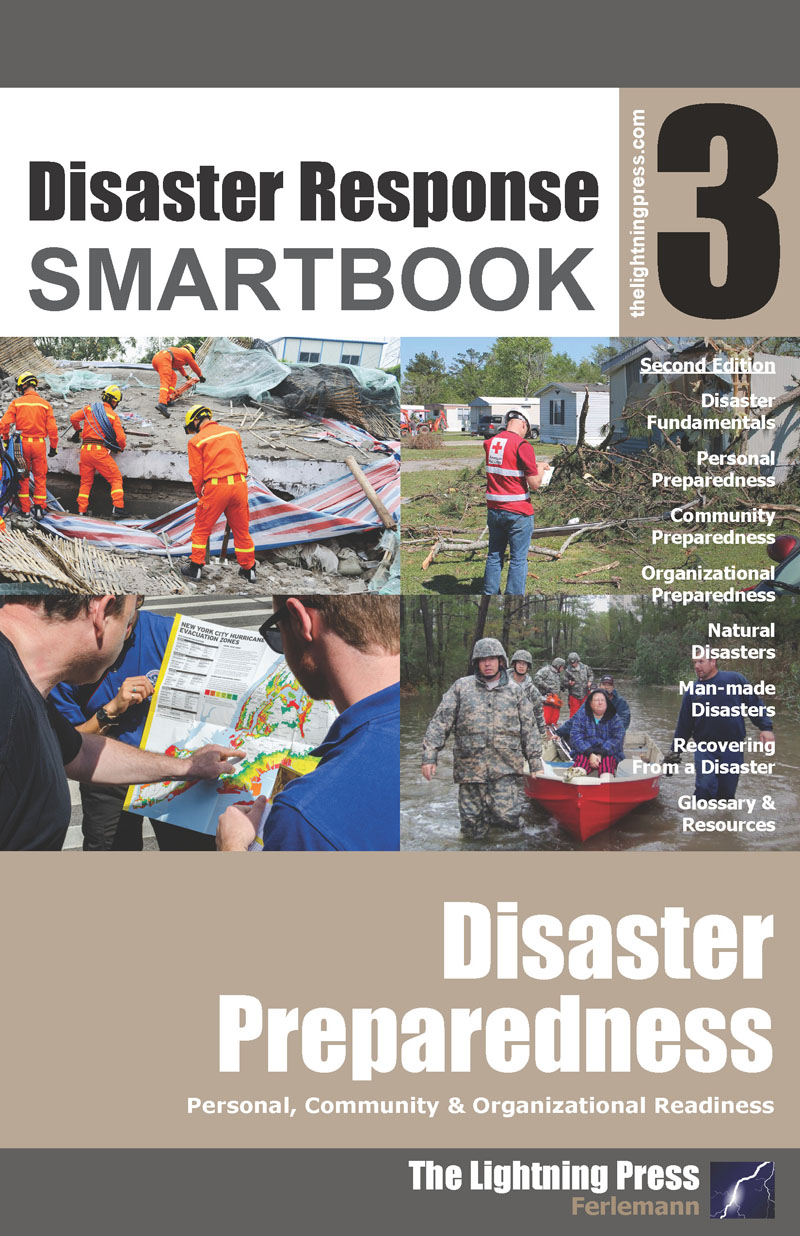
Disaster Response SMARTbook 3 - Disaster Preparedness, 2nd Ed.

CYBER1-1: The Cyberspace Operations & Electronic Warfare SMARTbook (w/SMARTupdate 1)
SMARTupdates
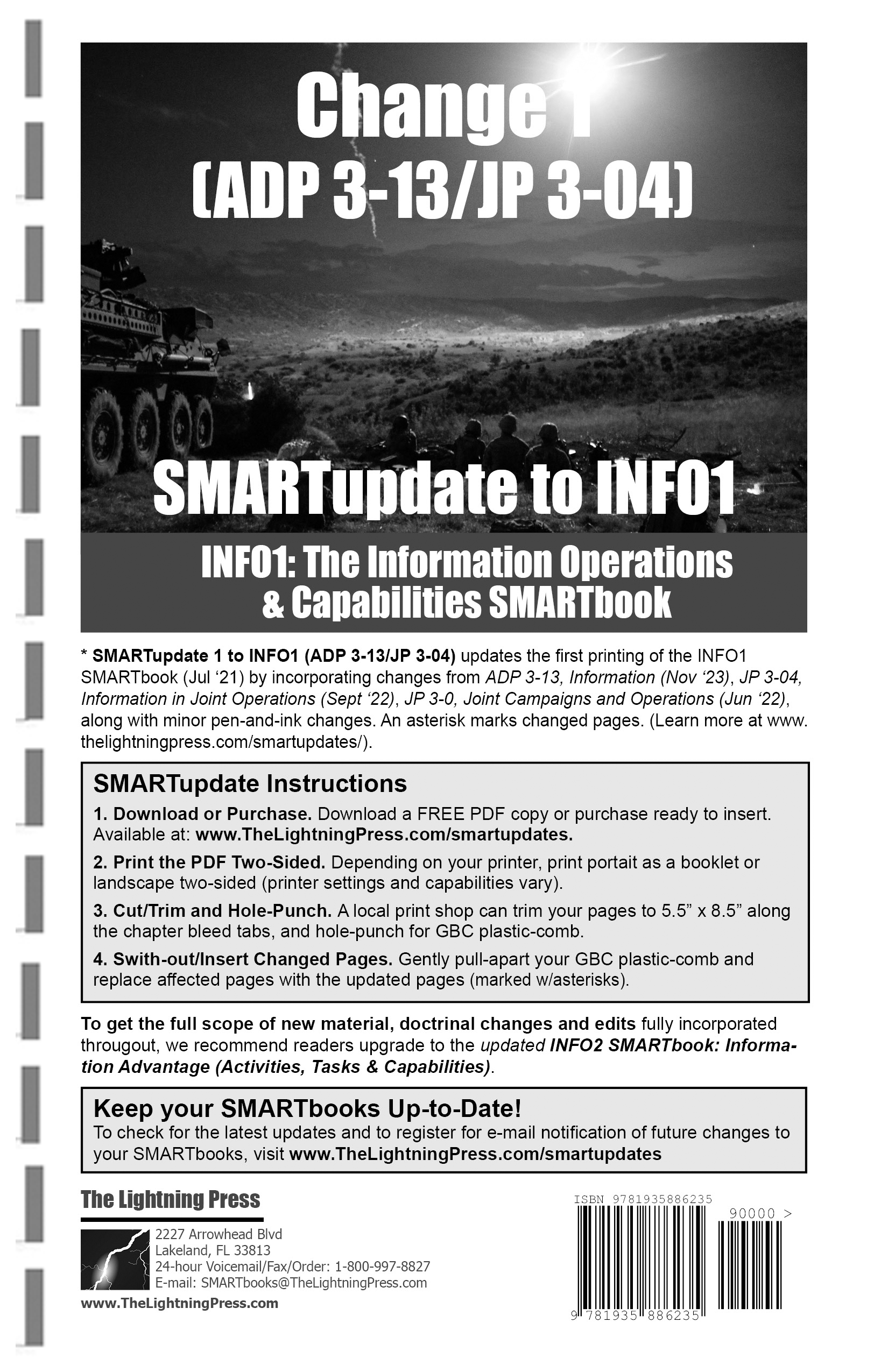
Change 1 (ADP 3-13/JP 3-04) SMARTupdate to INFO1
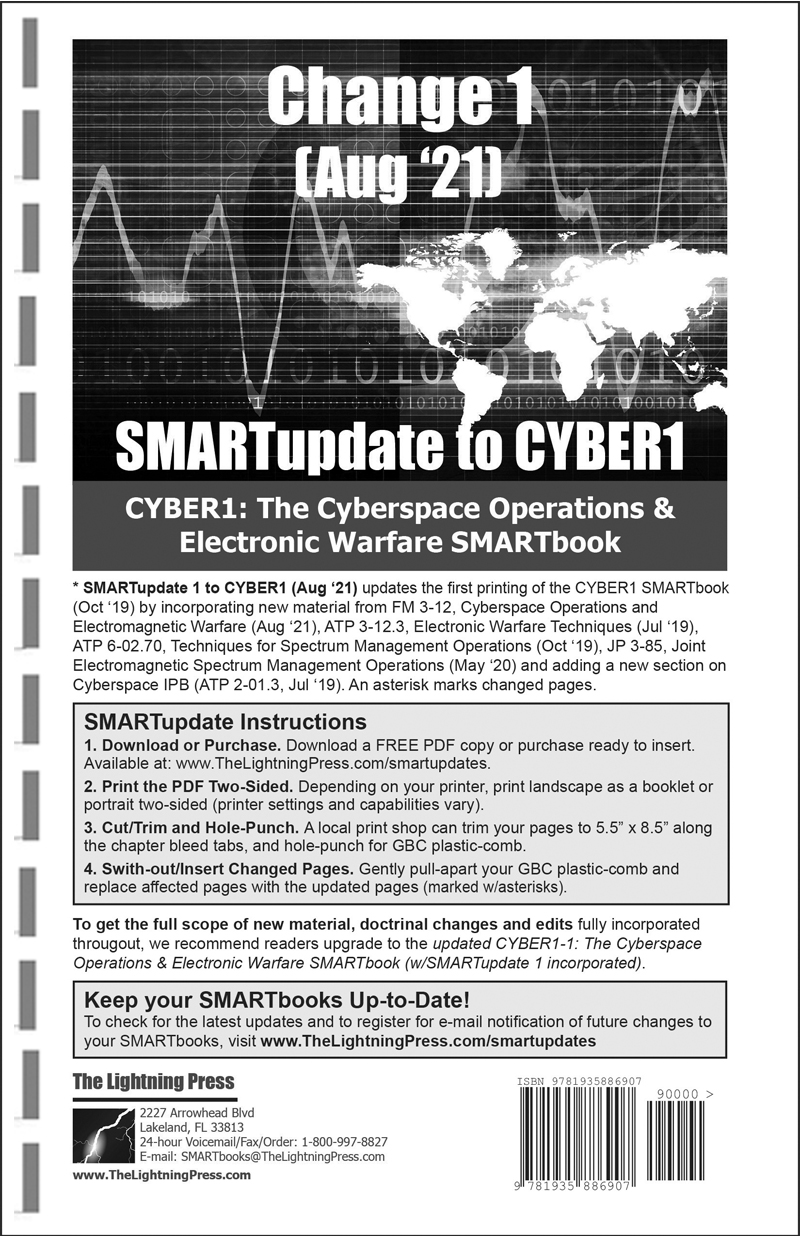
Change 1 (Aug ‘21) SMARTupdate to CYBER1
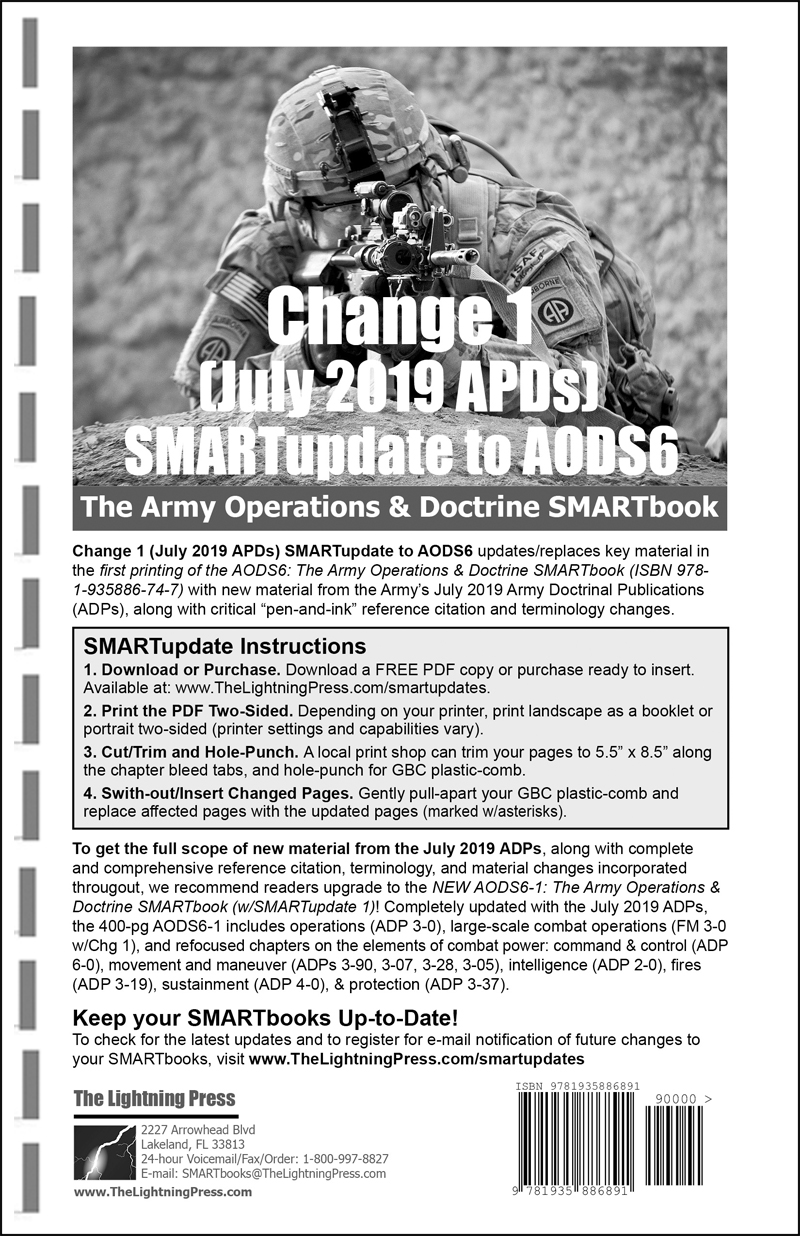
Change 1 (July 2019 ADPs) SMARTupdate to AODS6
Books in Development
SMARTsets
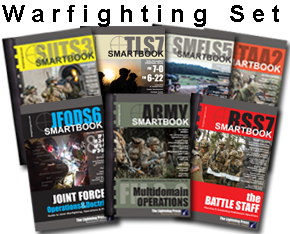
The ''WARFIGHTING'' SUPERset (7 books)
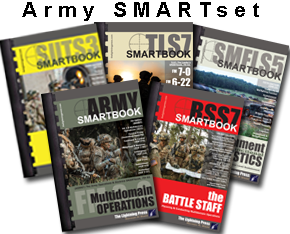
The ''ARMY'' SMARTset (5 books)
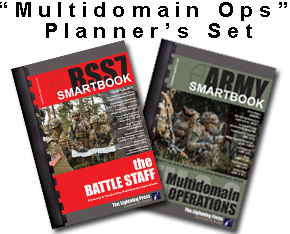
''Multidomain Operations'' Planner's SMARTset (2 books)
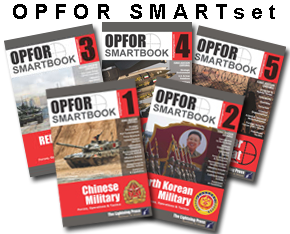
The ''OPFOR THREAT'' SMARTset (5 books)
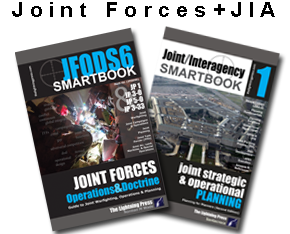
The ''JOINT FORCES + JOINT/INTERAGENCY'' SMARTset (2 books)
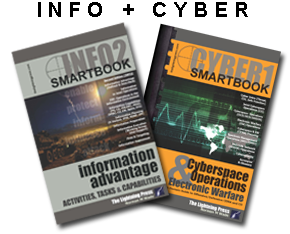
The ''INFO + CYBER'' SMARTset (2 books)
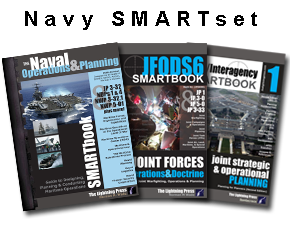
The ''NAVY'' SMARTset (3 books)
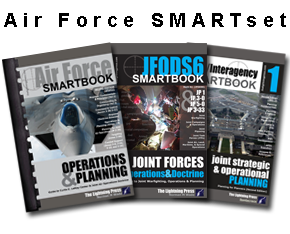
The ''AIR FORCE'' SMARTset (3 books)
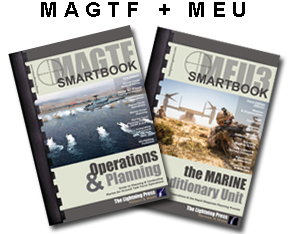
The ''MAGTF + MEU'' SMARTset (2 books)
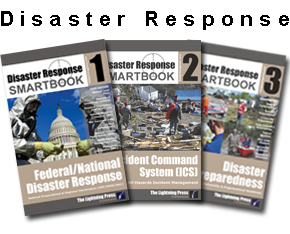
The ''DISASTER RESPONSE'' SMARTset (3 books)
JFODS5: The Joint Forces Operations & Doctrine SMARTbook, 5th Ed. (PREVIOUS EDITION)

ISBN-10 :1935886738
Release Date :Jan 1st, 2018
Norman M. Wade
Binding Type:Perfect Bind
Print Inside Pages:Black and White
Trim Size:5.5'' x 8.5''
Total Pages:400

A NEW edition of this book is available!
JFODS6: The Joint Forces Operations & Doctrine SMARTbook, 6th Ed.
Upgrade/update to the NEW 6th Edition (JFODS6)!
JFODS5: The Joint Forces Operations & Doctrine SMARTbook, 5th Ed. (Jan 2018) has been superseded by a newer fifth edition JFODS5 w/Change 1 (Apr 2020), but copies are still available here for readers looking for this specific edition or as required material for a specific course or class requirement.
Or upgrade/update to the NEW edition! Click "HERE" to browse the new JFODS5-1 edition!
JFODS5-1 is Change 1 to our fifth revised edition of The Joint Forces Operations & Doctrine SMARTbook. In addition to new/updated material from the latest editions of JP 3-0 Joint Operations (w/Change 1, Oct ‘18), JP 4-0 Joint Logistics (Feb ‘19), JP 3-33 Joint Task Force Headquarters (Jan ‘18), and JP 3-16 Multinational Operations (Mar ‘19), JFODS5-1 features a completely new chapter on Joint Air, Land, Maritime and Special Operations (JPs 3-30, 3-31, 3-32 & 3-05). Additional topics and references include JP 1 Doctrine for the Armed Forces of the United States (w/Change 1, Jul ‘17), JP 5-0 Joint Planning (Jun ’17), and JP 3-08 Interorganizational Cooperation (val. Oct ‘17).
The nature of the challenges to the United States and its interests demand that the Armed Forces operate as a fully integrated joint team across the conflict continuum.
Joint operations are military actions conducted by joint forces and those Service forces employed in specified command relationships with each other, which of themselves do not establish joint forces. The potential range of military activities and operations extends from military engagement, security cooperation, and deterrence in times of relative peace up through major operations and campaigns that typically involve large-scale combat.
Joint planning is the deliberate process of determining how (the ways) to use military capabilities (the means) in time and space to achieve objectives (the ends) while considering the associated risks.
Joint logistics is the coordinated use, synchronization, and sharing of two or more Military Departments’ logistics resources to support the joint force. Sustainment provides the joint force commanders freedom of action, endurance, and the ability to extend operational reach.
A joint task force (JTF) is established when the scope, complexity, or other factors of the contingency or crisis require capabilities of Services from at least two Military Departments operating under a single joint force commander.
Achieving national strategic objectives requires effective unified action resulting in unity of effort -- to include interagency, intergovernmental, nongovernmental and multinational partners. This is accomplished by interorganizational cooperation, synchronization, and coordination in the use of the diplomatic, informational, military, and economic instruments of national power.
Related Books
The Battle Staff SMARTbook, 4th Rev. Ed. (PREVIOUS EDITION)

ISBN-10 :1935886215
Release Note :Nov 2012
Norman M. Wade
Binding Type:Plastic Comb
Print Inside Pages:Black and White
Trim Size:5.5'' x 8.5''
Total Pages:320
Upgrade/update to the NEW 7th Edition (BSS7)!
The Battle Staff SMARTbook, 4th Ed. (May 2010) has been superseded by a newer sixth edition BSS6 (Aug '20).BSS6 is the sixth edition of The Battle Staff SMARTbook, completely updated for 2020. Updated material includes the full scope of new material from ADP 5-0, The Operations Process (Jul ‘19); ADP 6-0, Mission Command (Jul ‘19); FM 3-0 (w/Change 1), Operations (Dec ‘17); FM 6-0 (w/change 2), Commander and Staff Organization and Operations (Apr ‘16); ATP 2-01.3, Intelligence Preparation of the Battlefield (Mar ‘19); ADP 3-19, Fires (Jul ‘19); ATP 3-60, Targeting (May ‘15); ATP 5-19 (w/change 1), Risk Management (Apr ‘14); and ADP 1-02, Terms and Military Symbols (Aug ‘19); and more. BSS6 also features a return of our premium GBC plastic-comb binding for a true open-flat reference experience!
The Battle Staff SMARTbook covers the operations process (ADP 5-0); commander’s activities; Army planning methodologies; the military decisionmaking process and troop leading procedures (FM 6-0 w/Chg 2: MDMP & TLP); integrating processes (IPB, information collection, targeting, risk management, and knowledge management); plans and orders (WARNORDs/FRAGORDs/OPORDs); mission command, C2 warfighting function tasks, command posts, liaison (ADP 6-0); rehearsals & after action reviews; and operational terms and military symbols (ADP 1-02).
Always check our website for the most current and up-to-date SMARTbook edition! The Lightning Press is committed to providing the best and most relevant doctrinal material to our readers and are vigilant in reviewing new publications, anticipating upcoming doctrinal releases, and incorporating the updated material into our SMARTbook series!
Related Books
JFODS4: The Joint Forces Operations & Doctrine SMARTbook, 4th Ed. (PREVIOUS EDITION)

ISBN-10 :1935886657
Release Date :Jul 1st, 2015
Norman M. Wade
Binding Type:Perfect Bind
Print Inside Pages:Black and White
Trim Size:5.5'' x 8.5''
Total Pages:376

A NEW edition of this book is available!
JFODS6: The Joint Forces Operations & Doctrine SMARTbook, 6th Ed.
Upgrade/update to the NEW 6th Edition (JFODS6)!
JFODS4: The Joint Forces Operations & Doctrine SMARTbook, 4th Ed. (Jul 2015) has been superseded by a newer fifth edition w/change 1 JFODS5-1 (Apr '20).
JFODS5 is the fifth revised edition of The Joint Forces Operations & Doctrine SMARTbook, incorporating the full scope of new material from the latest editions of JP 3-0 Joint Operations (Jan ‘17), JP 5-0 Joint Planning (Jun ’17), JP 1 Doctrine for the Armed Forces of the United States (Change 1, Jul ‘17), and JP 3-08 Interorganizational Cooperation (Oct ‘16). Additional chapters and topics include Joint Task Force Headquarters (Jun ‘12), JP 4-0 Joint Logistics (Oct ‘13), JDN 2-13 Commander’s Communication Synchronization (Dec ‘13), JP 3-13 Information Operations (Nov ‘14), and JP 3-16 Multinational Operations (Jul ‘13).Related Books
BSS5: The Battle Staff SMARTbook, 5th Ed. (PREVIOUS EDITION)

ISBN-10 :1935886630
Release Date :Jul 1st, 2015
Norman M. Wade
Binding Type:Perfect Bind
Print Inside Pages:Black and White
Trim Size:5.5'' x 8.5''
Total Pages:344
Upgrade/update to the NEW 7th Edition (BSS7)!
BSS5: The Battle Staff SMARTbook, 5th Ed. (Jul 2015) has been superseded by a newer sixth edition BSS6 (Aug '20).
BSS6 is the sixth edition of The Battle Staff SMARTbook, completely updated for 2020. Updated material includes the full scope of new material from ADP 5-0, The Operations Process (Jul ‘19); ADP 6-0, Mission Command (Jul ‘19); FM 3-0 (w/Change 1), Operations (Dec ‘17); FM 6-0 (w/change 2), Commander and Staff Organization and Operations (Apr ‘16); ATP 2-01.3, Intelligence Preparation of the Battlefield (Mar ‘19); ADP 3-19, Fires (Jul ‘19); ATP 3-60, Targeting (May ‘15); ATP 5-19 (w/change 1), Risk Management (Apr ‘14); and ADP 1-02, Terms and Military Symbols (Aug ‘19); and more. BSS6 also features a return of our premium GBC plastic-comb binding for a true open-flat reference experience!
The Battle Staff SMARTbook covers the operations process (ADP 5-0); commander’s activities; Army planning methodologies; the military decisionmaking process and troop leading procedures (FM 6-0 w/Chg 2: MDMP & TLP); integrating processes (IPB, information collection, targeting, risk management, and knowledge management); plans and orders (WARNORDs/FRAGORDs/OPORDs); mission command, C2 warfighting function tasks, command posts, liaison (ADP 6-0); rehearsals & after action reviews; and operational terms and military symbols (ADP 1-02).
Always check our website for the most current and up-to-date SMARTbook edition! The Lightning Press is committed to providing the best and most relevant doctrinal material to our readers and are vigilant in reviewing new publications, anticipating upcoming doctrinal releases, and incorporating the updated material into our SMARTbook series!
Related Books
The Stability, Peace & Counterinsurgency SMARTbook (PREVIOUS EDITION)

ISBN-10 :098248593X
Release Date :Jan 1st, 2010
Norman M. Wade
Binding Type:Plastic Comb
Print Inside Pages:Black and White
Trim Size:5.5'' x 8.5''
Total Pages:304

A NEW edition of this book is available!
TAA2: The Military Engagement, Security Cooperation & Stability SMARTbook, 2nd Ed. (w/Change 1)
Upgrade/update to the NEW 2nd Edition (TAA2)!
The Stability, Peace & Counterinsurgency SMARTbook (Jan '10) is out of date has been superseded by a newer second edition TAA2 (Jan '18).
TAA2: The Military Engagement, Security Cooperation & Stability SMARTbook (with Change 1*) is the re-titled and re-focused second edition of The Stability, Peace & Counterinsurgency SMARTbook. Topics and references include the Range of Military Operations (JP 3-0); Train, Advise & Assist (SFA/FID/IDAD/HN/FSF); Stability Operations (JP & ADRP 3-07); Peace Operations (JP & FM 3-07.3); Counterinsurgency Operations (JP & FM 3-24); Civil-Military Operations (JP 3-57); Multinational Operations (JP 3-16); and Interorganizational Cooperation (JP 3-08).
* Change 1 to TAA2 (Sept 2017) incorporates new material and text edits from JP 3-0 (Jan 2017), JP 3-07 (Aug 2016), JP 3-20 (May 2017), JDN 1-3 (Apr 2013), and JP 3-08 (Oct 2016). An asterisk marks changed pages.
In the complex, dynamic operational environments of the 21st century, significant challenges to sustainable peace and security exist. Sources of instability that push parties toward violence include religious fanaticism, global competition for resources, climate change, residual territorial claims, ideology, ethnic tension, elitism, greed, and the desire for power. These factors create belts of state fragility and instability that threaten U.S. national security.
Throughout U.S. history, U.S. forces have learned that military force alone cannot secure sustainable peace. U.S. forces can only achieve sustainable peace through a comprehensive approach in which military objectives nest in a larger cooperative effort of the departments and agencies of the U.S. Government, intergovernmental and nongovernmental organizations, multinational partners, the private sector, and the host nation.
Military engagement, security cooperation, and stability missions, tasks, and actions encompass a wide range of actions where the military instrument of national power is tasked to support OGAs and cooperate with IGOs (e.g., UN, NATO) and other countries to protect and enhance national security interests, deter conflict, and set conditions for future contingency operations.
Use of joint capabilities in these and related activities such as Security Force Assistance and Foreign Internal Defense helps shape the operational environment and keep the day-to-day tensions between nations or groups below the threshold of armed conflict while maintaining US global influence.
Stability operations are various military missions, tasks, and activities conducted outside the US in coordination with other instruments of national power to maintain or reestablish a safe and secure environment, provide essential governmental services, emergency infrastructure reconstruction, and humanitarian relief.
Peace Operations are crisis response and limited contingency operations conducted by a combination of military forces and nonmilitary organizations to contain conflict, redress the peace, and shape the environment to support reconciliation and rebuilding and to facilitate the transition to legitimate governance.
A counterinsurgency campaign is a mix of offensive, defensive, and stability operations conducted along multiple lines of operations. It requires military forces to employ a mix of familiar combat tasks and skills more often associated with nonmilitary agencies and to be nation builders as well as warriors.
Civil-military operations are a primary military instrument to synchronize military and nonmilitary instruments of national power, particularly in support of stability, counterinsurgency and other operations dealing with asymmetric and irregular threats.
Related Books
MEU2: The Marine Expeditionary Unit SMARTbook, 2nd Ed. (PREVIOUS EDITION)

ISBN-10 :1935886681
Release Date :Apr 1st, 2016
Norman M. Wade
Binding Type:Perfect Bind
Print Inside Pages:Black and White
Trim Size:5.5'' x 8.5''
Total Pages:312

A NEW edition of this book is available!
MEU3: The Marine Expeditionary Unit SMARTbook, 3rd Ed.
Upgrade/update to the NEW 3rd Edition (MEU3)!
MEU2: The Marine Expeditionary Unit SMARTbook, 2nd Ed. (Apr 2016) has been superseded by a newer third edition MEU3 (Dec '20).
MEU3 is the third edition of the MEU SMARTbook, updated for 2020 with 34 pages of updated/additional material and a return of the original GBC plastic-comb binding. The Marine Expeditionary Unit (MEU) SMARTbook is designed to be a reference for MEU and PHIBRON Commanders, MEU and PHIBRON staffs and the commanders and staffs of the Major Subordinate Elements (MSE) and Naval Support Elements (NSE) of the ARG-MEU team.
The Marine Corps Planning Process (MCPP) is the basis for MEU staff planning. Planning is the art and science of envisioning a desired future and laying out effective ways of bringing it about. In war, planning can be essential to the ability to seize the initiative. In order to seize the initiative, we must be able to anticipate events and act purposefully and effectively before the enemy can. Planning mitigates crises by dealing with crisis situations before they reach crisis proportions.
The Rapid Response Planning Process (R2P2) is an accelerated execution of MCPP geared to Crisis Action Planning. The R2P2 process allows the MEU/PHIBRON to anticipate potential missions, create a set of standardized responses through analytical decision-making, and rehearse their responses to achieve full capability within six hours of receipt of a warning or execute order.
Rapid planning requires extensive training in the techniques and procedures associated with R2P2. It requires standardized, detailed, parallel, and concurrent command and staff actions using Standard Operating Procedures (SOPs) that are understood by all members of the unit.
The Marine Expeditionary Unit (MEU) SMARTbook helps to generate tempo and staff synergy in time-compressed situations through the use of “playbooks” for rapid planning and templates for efficient briefings.
Related Books
SMFLS4: The Sustainment & Multifunctional Logistics SMARTbook, 4th Ed. w/Change 1 (PREVIOUS EDITION)

ISBN-10 :1935886614
Release Date :Dec 15th, 2015
Norman M. Wade
Binding Type:Perfect Bind
Print Inside Pages:Black and White
Trim Size:5.5'' x 8.5''
Total Pages:368

A NEW edition of this book is available!
SMFLS5: The Sustainment & Multifunctional Logistics SMARTbook, 5th Ed.
Upgrade/update to the NEW 5th Edition (SMFLS5)!
SMFLS4: The Sustainment & Multifunctional Logistics SMARTbook, 4th Ed. (w/Change 1*) is the fourth revised edition of The Sustainment & Multifunctional Logistics SMARTbook. In addition to the most current versions of ADP/ADRP 4-0 Sustainment (Jul ‘12), SMFLS4 incorporates the full scope of new material from ATP 4-94 Theater Sustainment Command (Jun ‘13), ATP 4-93 Sustainment Brigade (Apr ‘16), ATP 4-90 Brigade Support Battalion (Aug ‘14), Sustainment Planning, JP 4-0 Joint Logistics (Oct ‘13), ATP 3-35 Army Deployment and Redeployment (Mar ‘15), and more than a dozen new/updated Army sustainment references to include ATP 4-33, ATP 4-42, ATP 4-16, ATP 4-0.1, ATP 4-34.40, ATP 4-92, FM 1-0, FM 1-04, FM 1-05, FM 1-06, FM 4-01, FM 4-02, and FM 4-30!
* Change 1 to SMFLS4 (Mar 2018) incorporates new material from ATP 4-93 Sustainment Brigade (Apr ‘16) and minor text edits from ADRP 3-0 (Nov ‘16). An asterisk marks changed pages.
The sustainment warfighting function is related tasks and systems that provide support and services to ensure freedom of action, extend operational reach, and prolong endurance. The sustainment warfighting function consists of three major elements: logistics, personnel services, & health service support.
Unified land operations acknowledges that strategic success requires fully integrating U.S. military operations with the efforts of interagency and multinational partners. The sustainment of unified land operations requires a continuous link between the strategic, operational, and tactical levels. It also requires close coordination and collaboration with other Services, allies, host nation, and other governmental organizations.
Decisive action is the continuous, simultaneous combinations of offensive, defensive, and stability or defense support of civil authorities tasks. Commanders seek to seize, retain, and exploit the initiative while synchronizing their actions. Sustainment, through mission command, enables decisive action. Sustainment provides the operational commander with operational reach, freedom of action and endurance.
Related Books
TLS6: The Leader’s SMARTbook, 6th Ed. (PREVIOUS EDITION)
ISBN-10 :1935886843
Release Date :Mar 4th, 2021
Norman M. Wade
Binding Type:Plastic Comb
Print Inside Pages:Black and White
Trim Size:5.5'' x 8.5''
Total Pages:392

Paperback Edition
Price: $42.95 $36.95

Bundle & Save (Paperback + Digital)
Price: $85.90 $49.95
Upgrade/update to the NEW 7th Edition (TLS7)!
TLS6: The Leader’s SMARTbook, 6th Ed. (Mar 2021) has been superseded by a new seventh edition TLS7 (Aug 2023), but copies are still available here for readers looking for this specific edition or as required material for a specific course or class requirement.
Or upgrade/update to the NEW edition! Click "HERE" to browse the new TLS7 edition!
TLS6 is the sixth edition of The Leader’s SMARTbook, completely updated for 2021. TLS6 incorporates the full scope of new material from ADP 6-22 Army Leadership and the Profession (with Change 1), ADP 7-0 Training, and FM 7-0 Train to Win in a Complex World. Jam-packed at 392 pages, topics and chapters include military leadership (ADP 6-22); leader development (FM 6-22); coach, counsel, and mentor (ATP 6-22.1), team building; (ATP 6-22.6), military training (ADP 7-0), train to win in a complex world (FM 7-0); unit training plans, meetings, schedules, briefs; conducting training events and exercises; training assessments, evaluations and after action reviews.
Among professions, the Army Profession has unique characteristics because of the lethality of our operations. The Nation tasks the Army to do many things besides combat operations, but ultimately the primary reason the Army exists is to fight and win the Nation’s wars through prompt and sustained land combat, as part of the joint force. The Army must always be prepared to accomplish this mission through the application of lethal force.
Leadership is the process of influencing people by providing purpose, direction, and motivation to accomplish the mission and improve the organization. As an element of combat power, leadership unifies the other elements of combat power (information, mission command, movement and maneuver, intelligence, fires, sustainment and protection). Confident, competent, and informed leadership intensifies the effectiveness of the other elements of combat power.
The Army depends upon itself to develop adaptable leaders able to achieve mission accomplishment in dynamic, unstable, and complex environments. A robust, holistic leader development program is essential. Through a mix of education, training, and experience, Army leader development processes produce and sustain agile, adaptive, and innovative leaders who act with boldness and initiative in dynamic, complex situations to execute missions according to doctrine, orders, and training.
Leaders have three principal ways of developing others. They can provide knowledge and feedback through counseling, coaching, and mentoring. The military is a team of teams composed of numerous organizations with one overarching common mission: win the nation’s wars. The ability to build teams through mutual trust and maintain effective, cohesive teams throughout military operations is an essential skill for all commanders, staffs, and leaders.
The Army trains to win in a complex world. To fight and win in a chaotic, ambiguous, and complex environment, the Army trains to provide forces ready to conduct unified land operations. The Army does this by conducting tough, realistic, and challenging training. Training is the most important thing the Army does to prepare for operations. Training is the cornerstone of readiness. Readiness determines our Nation’s ability to fight and win in a complex global environment.
Related Books
SUTS2: The Small Unit Tactics SMARTbook, 2nd Ed. w/Change 1 (PREVIOUS EDITION)

ISBN-10 :1935886649
Release Date :May 1st, 2017
Cover Type:Gloss U.V. Coating
Binding Type:Perfect Bind
Print Inside Pages:Black and White
Trim Size:5.5'' x 8.5''
Total Pages:320

A NEW edition of this book is available!
SUTS3: The Small Unit Tactics SMARTbook, 3rd Ed.
Upgrade/update to the NEW 3rd Edition (SUTS3)!
SUTS2: The Small Unit Tactics SMARTbook, 2nd Ed. w/Change 1 (May 2017) has been superseded by a new third edition SUTS3 (Feb 2020), but copies are still available here for readers looking for this specific edition or as required material for a specific course or class requirement.
Or upgrade/update to the NEW edition! Click "HERE" to browse the new SUTS3 edition!
SUTS2: The Small Unit Tactics SMARTbook, 2nd Ed. (with Change 1*) is the second revised edition of The Small Unit Tactics SMARTbook, featuring the full scope of new material and Doctrine 2015 updates to include ADP/ADRP 3-90 Offense and Defense, ADP/ADRP 5-0 The Operations Process, ADP/ADRP 6-0 Mission Command and more than 20 additional references. Chapters and topics include tactical mission fundamentals, the offense, the defense, stability and counterinsurgency operations, tactical enabling tasks (security, reconnaissance, relief in place, passage of lines, encirclement, and troop movement), special purpose attacks (ambush and raid), urban and regional environments (urban, fortified areas, desert, cold region, mountain, and jungle operations), patrols and patrolling.
* Change 1 to SUTS2 (Mar 2017) incorporates additional material from ADRP 3-0 (Nov 2016), FM 6-0 (Chg 2, Apr 2016) and Train, Advise, Assist (chap 4). An asterisk marks changed pages.
Tactics is the employment and ordered arrangement of forces in relation to each other. Through tactics, commanders use combat power to accomplish missions. The tactical-level commander uses combat power in battles, engagements, and small-unit actions.
Establishing a common frame of reference, doctrine provides a menu of practical options based on experience. It provides an authoritative guide for leaders and Soldiers but requires original applications that adapt it to circumstances.
The Small Unit Tactics SMARTbook translates and bridges operational-level doctrine into tactical application -- in the form of tactics, techniques and procedures -- and provides the “how to” at the small-unit level, providing a ready reference at the battalion, company, platoon, squad and fire team level.
Related Books
BSS6: The Battle Staff SMARTbook, 6th Ed. (PREVIOUS EDITION)

ISBN-10 :1935886819
Release Date :Aug 30th, 2020
Norman M. Wade
Binding Type:Plastic Comb
Print Inside Pages:Black and White
Trim Size:5.5'' x 8.5''
Total Pages:360
Upgrade/update to the NEW 7th Edition (BSS7)!
BSS6: The Battle Staff SMARTbook, 6th Ed. (Aug 2020) has been superseded by a new seventh edition BSS7 (Oct 2023), but copies are still available here for readers looking for this specific edition or as required material for a specific course or class requirement.
Or upgrade/update to the NEW edition! Click "HERE" to browse the new BSS7 edition!
BSS6 is the sixth edition of The Battle Staff SMARTbook, completely updated for 2020. Updated material includes the full scope of new material from ADP 5-0, The Operations Process (Jul ‘19); ADP 6-0, Mission Command (Jul ‘19); FM 3-0 (w/Change 1), Operations (Dec ‘17); FM 6-0 (w/change 2), Commander and Staff Organization and Operations (Apr ‘16); ATP 2-01.3, Intelligence Preparation of the Battlefield (Mar ‘19); ADP 3-19, Fires (Jul ‘19); ATP 3-60, Targeting (May ‘15); ATP 5-19 (w/change 1), Risk Management (Apr ‘14); and ADP 1-02, Terms and Military Symbols (Aug ‘19); and more. BSS6 also features a return of our premium GBC plastic-comb binding for a true open-flat reference experience!
The Battle Staff SMARTbook covers the operations process (ADP 5-0); commander’s activities; Army planning methodologies; the military decisionmaking process and troop leading procedures (FM 6-0 w/Chg 2: MDMP & TLP); integrating processes (IPB, information collection, targeting, risk management, and knowledge management); plans and orders (WARNORDs/FRAGORDs/OPORDs); mission command, C2 warfighting function tasks, command posts, liaison (ADP 6-0); rehearsals & after action reviews; and operational terms and military symbols (ADP 1-02).
The Army’s framework for organizing and putting command and control into action is the operations process—the major command and control activities performed during operations: planning, preparing, executing, and continuously assessing the operation. Commanders use the operations process to drive the conceptual and detailed planning necessary to understand their operational environment (OE); visualize and describe the operation’s end state and operational approach; make and articulate decisions; and direct, lead, and assess operations.
Planning is the art and science of understanding a situation, envisioning a desired future, and laying out effective ways of bringing that future about. Preparation consists of those activities performed by units and Soldiers to improve their ability to execute an operation. Execution is the act of putting a plan into action by applying combat power to accomplish the mission and adjusting operations based on changes in the situation. Assessment is a continuous activity that supports decision making by ascertaining progress of the operation for the purpose of developing and refining plans and for making operations more effective.
Related Books
The Army Operations & Doctrine SMARTbook, 5th Rev. Ed. (PREVIOUS EDITION)

ISBN-10 :1935886290
Release Date :Apr 1st, 2013
Norman M. Wade
Binding Type:Plastic Comb
Print Inside Pages:Black and White
Trim Size:5.5'' x 8.5''
Total Pages:320

A NEW edition of this book is available!
AODS7: The Army Operations & Doctrine SMARTbook, 7th Ed.
Upgrade/update to the NEW 5th Edition (AODS5 with Change 1)!
AODS5: The Army Operations & Doctrine SMARTbook, 5th Ed. w/Change 1 (May 2017) has been superseded by a newer sixth edition AODS6 w/SMARTupdate 1 (Aug '20).
Upgrade/update to the NEW edition! Click "HERE" to browse the new AODS6-1 edition!
AODS6-1: The Army Operations & Doctrine SMARTbook (w/SMARTupdate 1*) is the new sixth edition of our Army SMARTbook. Completely updated with the July 2019 ADPs, the 400-pg AODS6-1 includes operations (ADP 3-0), large-scale combat operations (FM 3-0 w/Chg 1), and refocused chapters on the elements of combat power: command & control (ADP 6-0), movement and maneuver (ADPs 3-90, 3-07, 3-28, 3-05), intelligence (ADP 2-0), fires (ADP 3-19), sustainment (ADP 4-0), & protection (ADP 3-37).
*SMARTupdate 1 to AODS6 (July 2019 ADPs) updates/replaces material in the first printing of the AODS6 SMARTbook with new material from the Army’s July 2019 ADPs, along with “pen-and-ink” reference citation and terminology changes. (Readers of the original/base AODS6 can obtain SMARTupdate 1 at www.thelightningpress.com/smartupdates/)
Always check our website for the most current and up-to-date SMARTbook edition! The Lightning Press is committed to providing the best and most relevant doctrinal material to our readers and are vigilant in reviewing new publications, anticipating upcoming doctrinal releases, and incorporating the updated material into our SMARTbook series!
Related Books
AODS5: The Army Operations & Doctrine SMARTbook, 5th Ed. (PREVIOUS EDITION)

ISBN-10 :1935886665
Release Date :Nov 1st, 2016
Norman M. Wade
Binding Type:Perfect Bind
Print Inside Pages:Black and White
Trim Size:5.5'' x 8.5''
Total Pages:320

A NEW edition of this book is available!
AODS7: The Army Operations & Doctrine SMARTbook, 7th Ed.
Upgrade/update to the NEW 7th Edition (AODS7)!
Upgrade/update to the NEW edition! AODS5: The Army Operations & Doctrine SMARTbook, 5th Ed. is out of date has been superseded by a newer seventh edition AODS7.
Always check our website for the most current and up-to-date SMARTbook edition! The Lightning Press is committed to providing the best and most relevant doctrinal material to our readers and are vigilant in reviewing new publications, anticipating upcoming doctrinal releases, and incorporating the updated material into our SMARTbook series!
Related Books
AODS5: The Army Operations & Doctrine SMARTbook, 5th Ed. w/Change 1 (PREVIOUS EDITION)

ISBN-10 :1935886665
Release Date :May 1st, 2017
Norman M. Wade
Binding Type:Perfect Bind
Print Inside Pages:Black and White
Trim Size:5.5'' x 8.5''
Total Pages:320

A NEW edition of this book is available!
AODS7: The Army Operations & Doctrine SMARTbook, 7th Ed.
Upgrade/update to the NEW 7th Edition (AODS7)!
AODS5: The Army Operations & Doctrine SMARTbook, 5th Ed. w/Change 1 (May 2017) has been superseded by a newer seventh edition (AODS7).
Always check our website for the most current and up-to-date SMARTbook edition! The Lightning Press is committed to providing the best and most relevant doctrinal material to our readers and are vigilant in reviewing new publications, anticipating upcoming doctrinal releases, and incorporating the updated material into our SMARTbook series!
Related Books
TLS5: The Leader's SMARTbook, 5th Ed. (PREVIOUS EDITION)

ISBN-10 :193588672X
Release Date :Jul 1st, 2017
Norman M. Wade
Binding Type:Perfect Bind
Print Inside Pages:Black and White
Trim Size:5.5'' x 8.5''
Total Pages:400

A NEW edition of this book is available!
TLS6: The Leader’s SMARTbook, 6th Ed. (PREVIOUS EDITION)
Upgrade/update to the NEW 7th Edition (TLS7)!
Upgrade/update to the NEW edition! TLS5: The Leader's SMARTbook, 5th Rev. Ed. (May 2018) has been superseded by a newer edition TLS6 (Mar 2021). Always check our website for the most current and up-to-date SMARTbook edition! The Lightning Press is committed to providing the best and most relevant doctrinal material to our readers and are vigilant in reviewing new publications, anticipating upcoming doctrinal releases, and incorporating the updated material into our SMARTbook series! Click "View New Edition" above to browse the new edition!TLS6 is the sixth edition of The Leader’s SMARTbook, completely updated for 2021. TLS6 incorporates the full scope of new material from ADP 6-22 Army Leadership and the Profession (with Change 1), ADP 7-0 Training, and FM 7-0 Train to Win in a Complex World. Jam-packed at 392 pages, topics and chapters include military leadership (ADP 6-22); leader development (FM 6-22); coach, counsel, and mentor (ATP 6-22.1), team building; (ATP 6-22.6), military training (ADP 7-0), train to win in a complex world (FM 7-0); unit training plans, meetings, schedules, briefs; conducting training events and exercises; training assessments, evaluations and after action reviews.
Related Books
TLS4: The Leader’s SMARTbook, 4th Rev. Ed. (PREVIOUS EDITION)

ISBN-10 :1935886622
Release Date :May 1st, 2015
Norman M. Wade
Binding Type:""
Print Inside Pages:Black and White
Trim Size:5.5'' x 8.5''
Total Pages:312

A NEW edition of this book is available!
TLS6: The Leader’s SMARTbook, 6th Ed. (PREVIOUS EDITION)
Upgrade/update to the NEW 6th Edition (TLS6)!
Upgrade/update to the NEW edition! TLS4: The Leader's SMARTbook, 4th Rev. Ed. (May 2015) has been superseded by a newer edition TLS6 (Mar 2021). Always check our website for the most current and up-to-date SMARTbook edition! The Lightning Press is committed to providing the best and most relevant doctrinal material to our readers and are vigilant in reviewing new publications, anticipating upcoming doctrinal releases, and incorporating the updated material into our SMARTbook series! Click "View New Edition" above to browse the new edition!TLS6 is the sixth edition of The Leader’s SMARTbook, completely updated for 2021. TLS6 incorporates the full scope of new material from ADP 6-22 Army Leadership and the Profession (with Change 1), ADP 7-0 Training, and FM 7-0 Train to Win in a Complex World. Jam-packed at 392 pages, topics and chapters include military leadership (ADP 6-22); leader development (FM 6-22); coach, counsel, and mentor (ATP 6-22.1), team building; (ATP 6-22.6), military training (ADP 7-0), train to win in a complex world (FM 7-0); unit training plans, meetings, schedules, briefs; conducting training events and exercises; training assessments, evaluations and after action reviews.
Related Books
The Joint Forces Operations & Doctrine SMARTbook, 2nd Rev. Ed. (PREVIOUS EDITION)

Release Date :Mar 1st, 2009
Norman M. Wade
Binding Type:Plastic Comb
Print Inside Pages:Black and White
Trim Size:5.5'' x 8.5''
Total Pages:336

A NEW edition of this book is available!
JFODS6: The Joint Forces Operations & Doctrine SMARTbook, 6th Ed.
Upgrade/update to the NEW 6th Edition (JFODS6)!
Upgrade/update to the NEW edition! The Joint Forces Operations & Doctrine SMARTbook, 2nd Rev. Ed. (Mar 2009) is out-of-date and has been superseded by a newer 5th edition JFODS5 (Jan 2018).
Click "View Book" above to browse the new edition!
JFODS5 is the fifth revised edition of The Joint Forces Operations & Doctrine SMARTbook, incorporating the full scope of new material from the latest editions of JP 3-0 Joint Operations (Jan ‘17), JP 5-0 Joint Planning (Jun ’17), JP 1 Doctrine for the Armed Forces of the United States (Change 1, Jul ‘17), and JP 3-08 Interorganizational Cooperation (Oct ‘16). Additional chapters and topics include Joint Task Force Headquarters (Jun ‘12), JP 4-0 Joint Logistics (Oct ‘13), JDN 2-13 Commander’s Communication Synchronization (Dec ‘13), JP 3-13 Information Operations (Nov ‘14), and JP 3-16 Multinational Operations (Jul ‘13).
Always check our website for the most current and up-to-date SMARTbook edition! The Lightning Press is committed to providing the best and most relevant doctrinal material to our readers and are vigilant in reviewing new publications, anticipating upcoming doctrinal releases, and incorporating the updated material into our SMARTbook series!
Related Books
The Joint Forces Operations & Doctrine SMARTbook, 3rd Rev. Ed. (PREVIOUS EDITION)

ISBN-10 :1935886150
Release Date :Jun 1st, 2012
Norman M. Wade
Norman M. Wade
Binding Type:Plastic Comb
Print Inside Pages:Black and White
Trim Size:5.5'' x 8.5''
Total Pages:336

A NEW edition of this book is available!
JFODS6: The Joint Forces Operations & Doctrine SMARTbook, 6th Ed.
Upgrade/update to the NEW 6th Edition (JFODS6)!
The Joint Forces Operations & Doctrine SMARTbook, 3rd Rev. Ed. (Jun 2012) has been superseded by a newer fifth edition JFODS5 (Jan 2018), but copies are still available here for readers looking for this specific edition or as required material for a specific course or class requirement.
Or upgrade/update to the NEW edition! Click "HERE" to browse the new JFODS5 edition!
JFODS5 is the fifth revised edition of The Joint Forces Operations & Doctrine SMARTbook, incorporating the full scope of new material from the latest editions of JP 3-0 Joint Operations (Jan ‘17), JP 5-0 Joint Planning (Jun ’17), JP 1 Doctrine for the Armed Forces of the United States (Change 1, Jul ‘17), and JP 3-08 Interorganizational Cooperation (Oct ‘16). Additional chapters and topics include Joint Task Force Headquarters (Jun ‘12), JP 4-0 Joint Logistics (Oct ‘13), JDN 2-13 Commander’s Communication Synchronization (Dec ‘13), JP 3-13 Information Operations (Nov ‘14), and JP 3-16 Multinational Operations (Jul ‘13).
Related Books
AODS6-1: The Army Operations & Doctrine SMARTbook, 6th Ed. w/SMARTupdate 1 (PREVIOUS EDITION)

ISBN-10 :1935886746
Release Note :Base AODS6 released 1 Nov 18 (New AODS6-1 w/SMARTupdate 1 released 12 Aug 20.)
Norman M. Wade
Binding Type:Plastic Comb
Print Inside Pages:Black and White
Trim Size:5.5'' x 8.5''
Total Pages:400

A NEW edition of this book is available!
AODS7: The Army Operations & Doctrine SMARTbook, 7th Ed.
Upgrade/update to the NEW 7th Edition (AODS7)!
AODS6-1: The Army Operations & Doctrine SMARTbook (w/SMARTupdate 1*) is the new sixth edition of our Army SMARTbook. Completely updated with the July 2019 ADPs, the 400-pg AODS6-1 includes operations (ADP 3-0), large-scale combat operations (FM 3-0 w/Chg 1), and refocused chapters on the elements of combat power: command & control (ADP 6-0), movement and maneuver (ADPs 3-90, 3-07, 3-28, 3-05), intelligence (ADP 2-0), fires (ADP 3-19), sustainment (ADP 4-0), & protection (ADP 3-37).
*SMARTupdate 1 to AODS6 (July 2019 ADPs) updates/replaces material in the first printing of the AODS6 SMARTbook with new material from the Army’s July 2019 ADPs, along with “pen-and-ink” reference citation and terminology changes. (Readers of the original/base AODS6 can obtain SMARTupdate 1 at www.thelightningpress.com/smartupdates/)
An operation is a sequence of tactical actions with a common purpose or unifying theme. Army forces, with unified action partners, conduct land operations to shape security environments, prevent conflict, prevail in ground combat, and consolidate gains. Army forces provide multiple options for responding to and resolving crises. Army forces defeat enemy forces, control terrain, secure populations, and preserve joint force freedom of action.
While the U.S. Army must be manned, equipped, and trained to operate across the range of military operations, large-scale ground combat against a peer threat represents the most significant readiness requirement. FM 3-0 expands on ADP 3-0 by providing tactics describing how theater armies, corps, divisions, and brigades work together and with unified action partners to successfully prosecute operations short of conflict, prevail in large-scale combat operations, and consolidate gains to win.
Decisive action is the continuous, simultaneous combinations of offensive, defensive, and stability or defense support of civil authorities tasks. Army forces conduct multi-domain battle, as part of a joint force, to seize, retain, and exploit control over enemy forces.
Combat power is the total means of destructive, constructive, and information capabilities that a military unit or formation can apply at a given time. To an Army commander, Army forces generate combat power by converting potential into effective action. Combat power has eight elements: leadership, information, mission command, movement and maneuver, intelligence, fires, sustainment, and protection. The Army collectively describes the last six elements as the warfighting functions.
Related Books
Joint/Interagency SMARTbook 1 – Joint Strategic & Operational Planning (PREVIOUS EDITION)

ISBN-10 :1935886584
Release Date :Jan 1st, 2015
Michael A. Santacroce
Binding Type:Perfect Bind
Print Inside Pages:Black and White
Trim Size:5.5'' x 8.5''
Total Pages:400

A NEW edition of this book is available!
Joint/Interagency SMARTbook 1 – Joint Strategic & Operational Planning, 3rd Ed.
Upgrade/update to the NEW 3rd Edition (JIA1-3)!
Joint/Interagency SMARTbook 1 – Joint Strategic & Operational Planning (Jan 2015) has been superseded by a newer second edition JIA1-2 (May 2019), but copies are still available here for readers looking for this specific edition or as required material for a specific course or class requirement.Or upgrade/update to the NEW edition! Click "HERE" to browse the new JIA1-2 edition!
JIA1-2 is the new second edition of our Joint/Interagency SMARTbook 1: Joint Strategic & Operational Planning (Planning for Planners), completely reorganized and updated with the latest joint publications for 2019. At 408-pgs, JIA1-2 is designed to give the reader a thorough understanding of joint planning and the adaptive planning and execution (APEX) enterprise, where the JPP resides. Topics and chapters include planning fundamentals (strategic organization, campaigning, sequencing actions), planning functions (planning and plans, contingency planning, planning in a crisis, APEX operational activities, APEX planning functions), global force management (GFM overview and processes, force identification and sourcing, force planning), joint intelligence preparation of the operational environment (JIPOE), intelligence preparation of the information environment (IPIE), joint planning process (JPP), plan or order development (process, review, assessment), APEX execution functions, and annexes.
Related Books
INFO1: The Information Operations & Capabilities SMARTbook (PREVIOUS EDITION)

ISBN-10 : 1935886606
Release Date :Jul 1st, 2021
Norman M. Wade
Binding Type:Plastic Comb
Print Inside Pages:Black and White
Trim Size:5.5'' x 8.5''
Total Pages:288
Guide to Information Operations & the IRCs
Over the past two decades, information operations (IO) has gone through a number of doctrinal evolutions, explained, in part, by the rapidly changing nature of information, its flow, processing, dissemination, impact and, in particular, its military employment. INFO1: The Information Operations & Capabilities SMARTbook examines the most current doctrinal references available and charts a path to emerging doctrine. INFO1 chapters and topics include information operations (IO defined and described), information in joint operations (joint IO), information-related capabilities (public affairs, civil affairs and civil military operations, military deception, military information support operations, operations security, cyberspace electromagnetic activities, cyberspace operations, electronic warfare, space operations, special technical operations, & additional IRCs), information planning (IRC synchronization, information environment analysis, IPB, MDMP, JPP), information preparation, information execution (IO working group, IO weighted efforts and enabling activities, intel support), fires & targeting, and information assessment. Information is a resource. As a resource, it must be obtained, developed, refined, distributed, and protected. The information element of combat power is integral to optimizing combat power, particularly given the increasing relevance of operations in and through the information environment to achieve decisive outcomes. Information Operations (IO) is the integrated employment, during military operations, of information-related capabilities in concert with other lines of operation to influence, disrupt, corrupt, or usurp the decision-making of adversaries and potential adversaries while protecting our own. The purpose of IO is to create effects in and through the information environment that provide commanders decisive advantage over enemies and adversaries. The joint force commander (JFC) leverages informational aspects of military activities to gain an advantage; failing to leverage those aspects may cede this advantage to others. Leveraging the informational aspects of military activities ultimately affects strategic outcomes. The joint force attacks and exploits information, information networks, and systems to affect the ability of relevant actors to leverage information in support of their own objectives. This includes the manipulation, modification, or destruction of information or disruption of the flow of information for the purpose of gaining a position of military advantage. This also includes targeting the credibility of information. An information-related capability (IRC) is a tool, technique, or activity employed within a dimension of the information environment that can be used to create effects and operationally desirable conditions. IO brings together information-related capabilities (IRCs) at a specific time and in a coherent fashion to create effects in and through the information environment that advance the ability to deliver operational advantage to the commander.Related Books
Joint/Interagency SMARTbook 1 – Joint Strategic & Operational Planning, 2nd Ed. (PREVIOUS EDITION)

ISBN-10 :1935886762
Release Date :May 1st, 2019
Michael A. Santacroce
Binding Type:Perfect Bind
Print Inside Pages:Black and White
Trim Size:5.5'' x 8.5''
Total Pages:408

A NEW edition of this book is available!
Joint/Interagency SMARTbook 1 – Joint Strategic & Operational Planning, 3rd Ed.
Upgrade/update to the NEW 3rd Edition (JIA1-3)!
JIA1-2 is the new second edition of our Joint/Interagency SMARTbook 1: Joint Strategic & Operational Planning (Planning for Planners), completely reorganized and updated with the latest joint publications for 2019. At 408-pgs, JIA1-2 is designed to give the reader a thorough understanding of joint planning and the adaptive planning and execution (APEX) enterprise, where the JPP resides. Topics and chapters include planning fundamentals (strategic organization, campaigning, sequencing actions), planning functions (planning and plans, contingency planning, planning in a crisis, APEX operational activities, APEX planning functions), global force management (GFM overview and processes, force identification and sourcing, force planning), joint intelligence preparation of the operational environment (JIPOE), intelligence preparation of the information environment (IPIE), joint planning process (JPP), plan or order development (process, review, assessment), APEX execution functions, and annexes.
The dawn of the 21st Century presents an increasingly complex global security environment. Within this environment United States national interest, citizens, and territories are threatened by regional instability, failed states, increased weapons proliferation, global terrorism, unconventional threats and challenges from adversaries in every operating domain. If we are to be successful as a nation, we must embrace the realities of this environment and operate with clarity from within. It is this setting that mandates a flexible, adaptive approach to planning and an ever-greater cooperation between all the elements of national power, supported by and coordinated with that of our allies and various intergovernmental, nongovernmental and regional security organizations. It is within this chaotic environment that planners will craft their trade.
Joint/Interagency SMARTbook 1: Joint Strategic & Operational Planning (Planning for Planners), 2nd Edition (JIA1-2), was developed to assist planners at all levels in understanding how to plan within this environment utilizing the Joint Planning Process (JPP); an orderly, logical, analytical progression enabling planners to sequentially follow it to a rational conclusion. By utilizing this planning process, which is conceptually easy to understand and applicable in all environments, any plan can come to life. Paramount to planning is flexibility. The ultimate aspiration of this book is to help develop flexible planners who can cope with the inevitable changes that occur during the planning process in any environment.
Planning for Planners has been utilized since 2007 by war colleges, joint staffs, Services, combatant commands and allies as a step-by-step guide to understanding the complex world of global planning and force management.
Related Books
The Air Force Operations & Planning SMARTbook w/SMARTupdate 1 (PREVIOUS EDITION)

ISBN-10 :1935886126
Release Date :Nov 5th, 2011
Norman M. Wade
Binding Type:Plastic Comb
Print Inside Pages:Black and White
Trim Size:5.5'' x 8.5''
Total Pages:304

A NEW edition of this book is available!
AFOPS2: The Air Force Operations & Planning SMARTbook, 2nd Ed.
Upgrade to the new 2nd Edition (AFOPS2)!
The Air Force Operations & Planning SMARTbook w/SMARTupdate 1 (Nov 2011) has been superseded by a newer second edition AFOPS2 (Jan 2019), but copies are still available here for readers looking for this specific edition or as required material for a specific course or class requirement.
Or upgrade/update to the NEW edition! Click "HERE" to browse the new AFOPS2 edition!
AFOPS2: The Air Force Operations & Planning SMARTbook, 2nd Ed. (Guide to Curtis E. LeMay Center & Joint Air Operations Doctrine) is the second edition of our Air Force SMARTbook. Topics and references of the 376-pg AFOPS2 include airpower fundamentals and principles (Volume 1), command and organizing (Volume 3); command and control (Annex 3-30/3-52), airpower (doctrine annexes), operations and planning (Annex 3-0), planning for joint air operations (JP 3-30/3-60), targeting (Annex 3-60), and combat support (Annex 4-0, 4-02, 3-10, and 3-34).
Related Books










